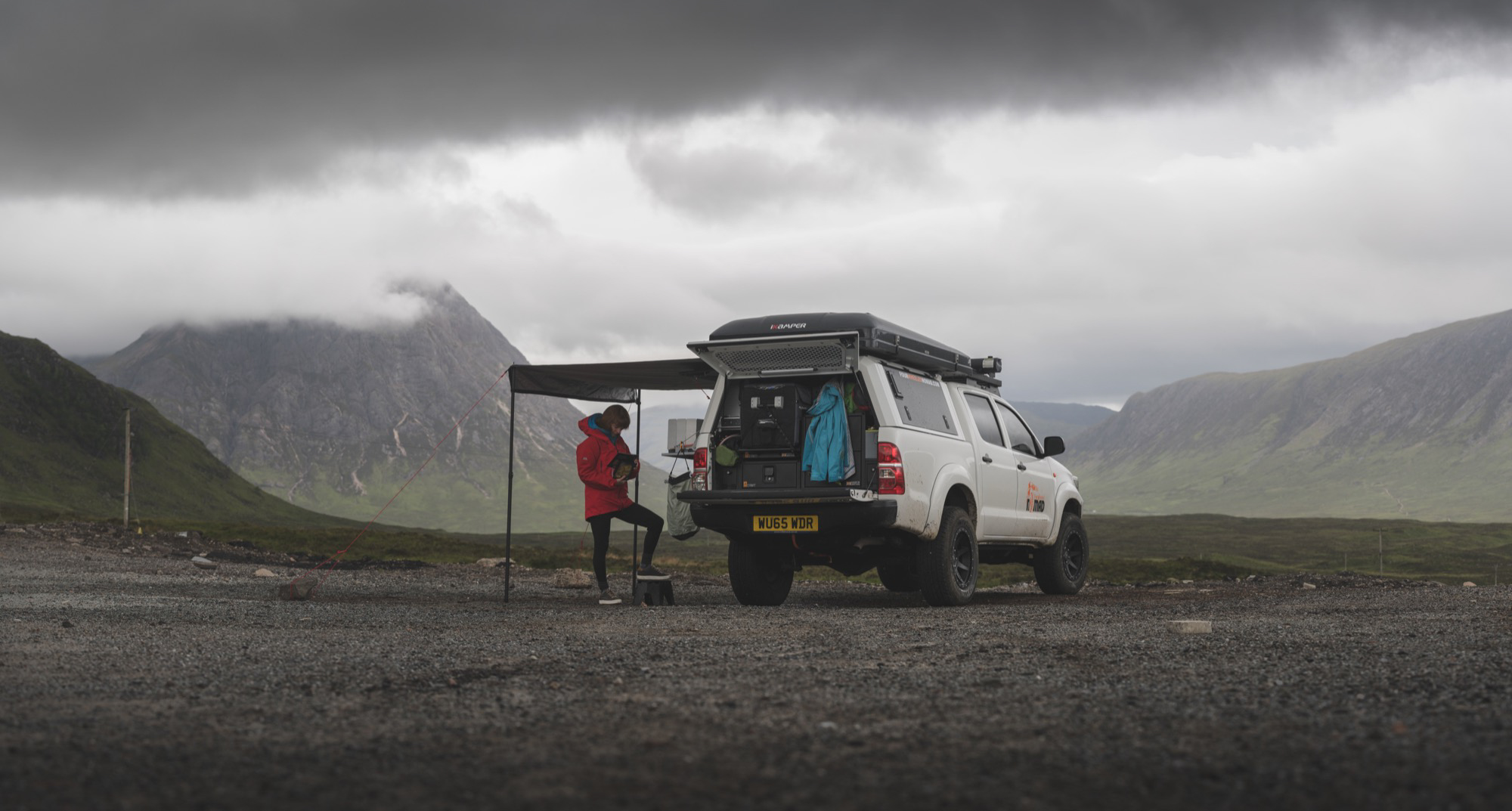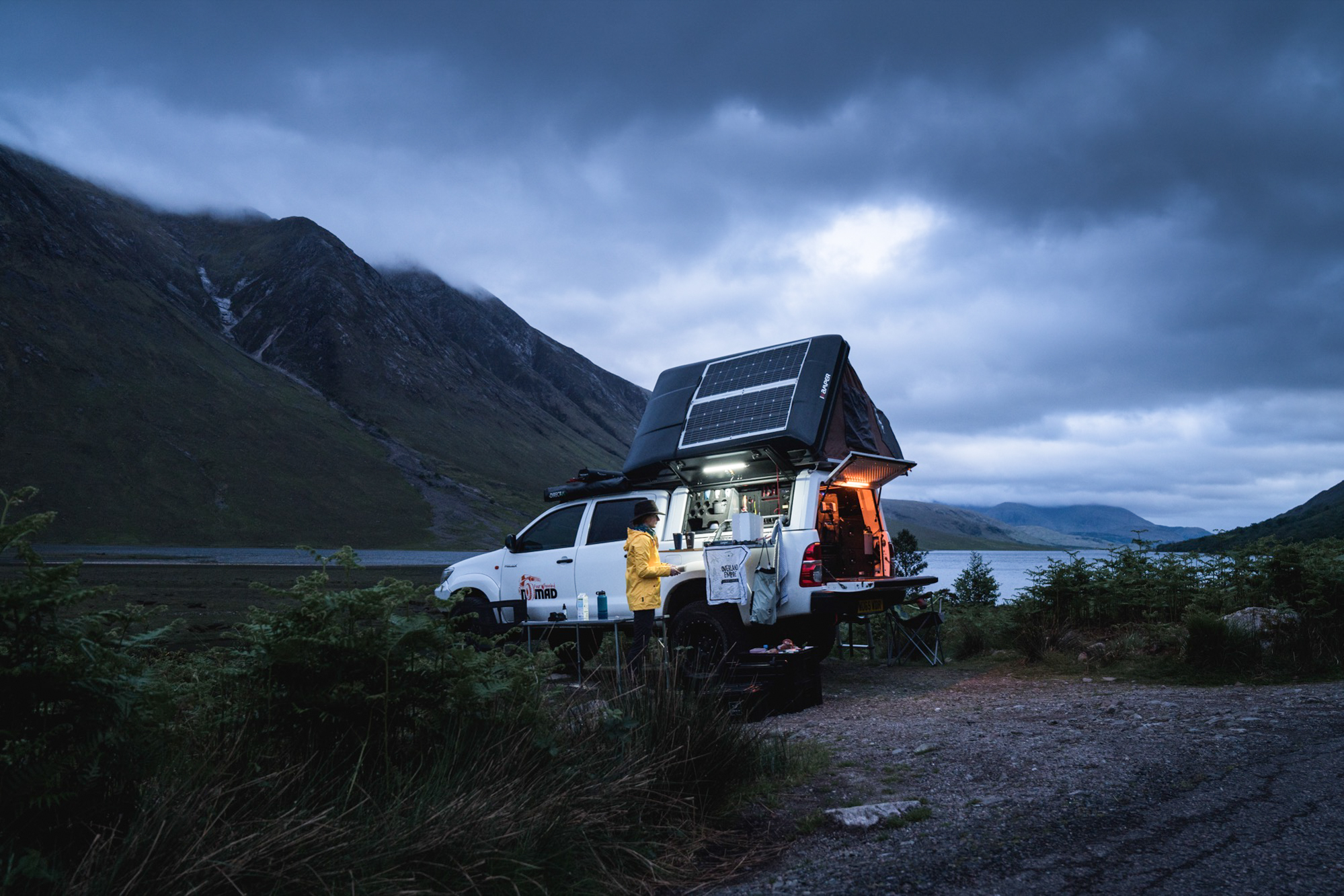Making the jump from two wheels to four was not a decision we entered upon lightly. We purchased a Toyota 4WD, guiding it through its transformation for our current expedition from Northern Norway to South Africa. I’m hoping all our efforts and choices will reap the rewards from Cape to Cape, and that the gear and aspirations on which we’ve loaded up will see us through the next leg of swapping the life conventional for the drive of a lifetime. It’s hard not to grin.
Preparing a Hilux for overland travel
Investing in a 2015 Hilux 5-speed transmission for $15.6K destined to become a live-out-of-vehicle, I wasn’t convinced we’d made the right choice. Over budget, at least the rig’s low mileage and rep for Herculean strength should pay dividends for years to come. Similar to an underpowered Tacoma but with better fuel consumption being a diesel, Hiluxes are available in Europe and Africa, keeping life simple regarding parts and repairs. The 2.5-litre engine won’t win any races, although its power should suffice for where we’re going.
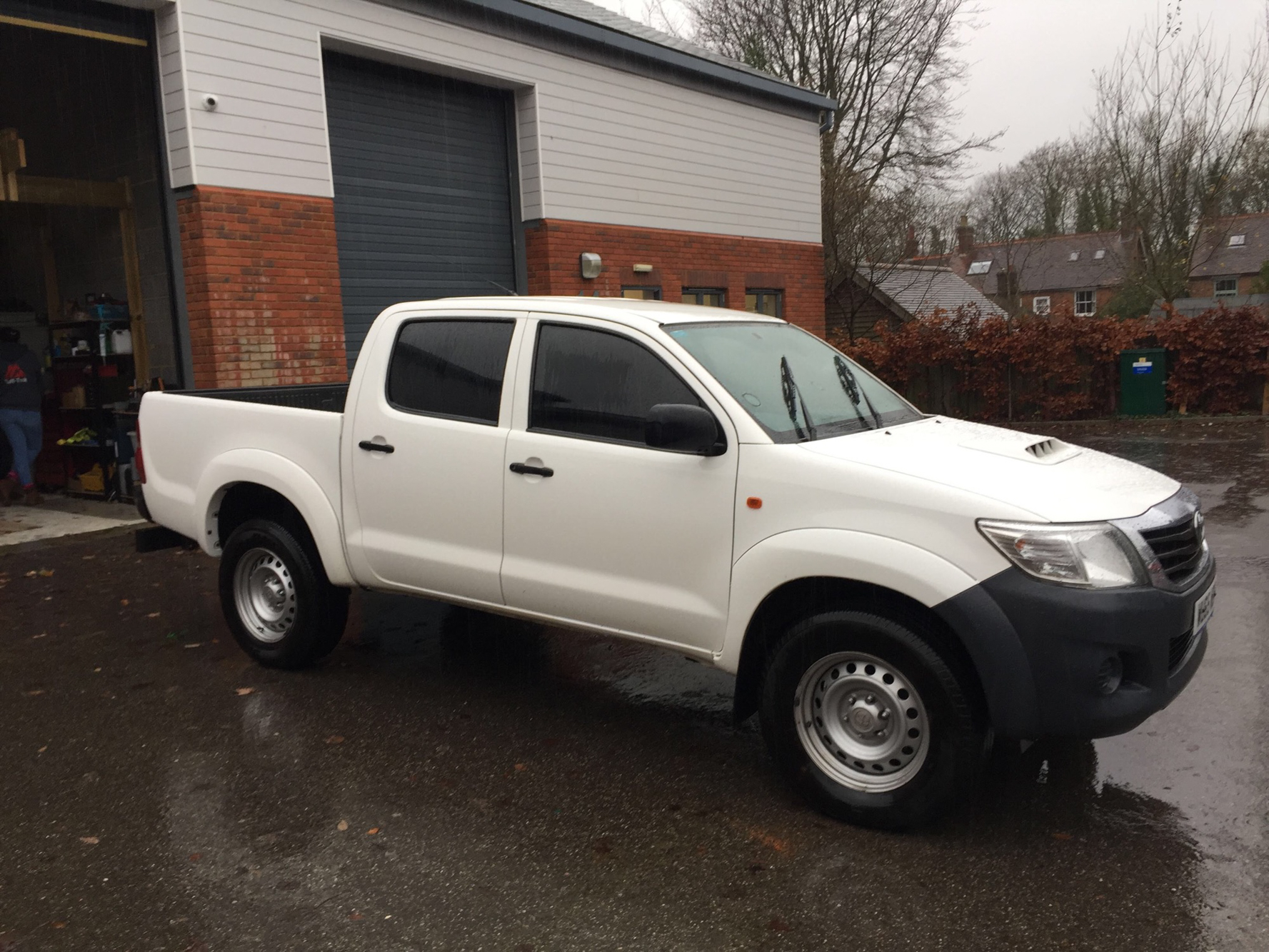
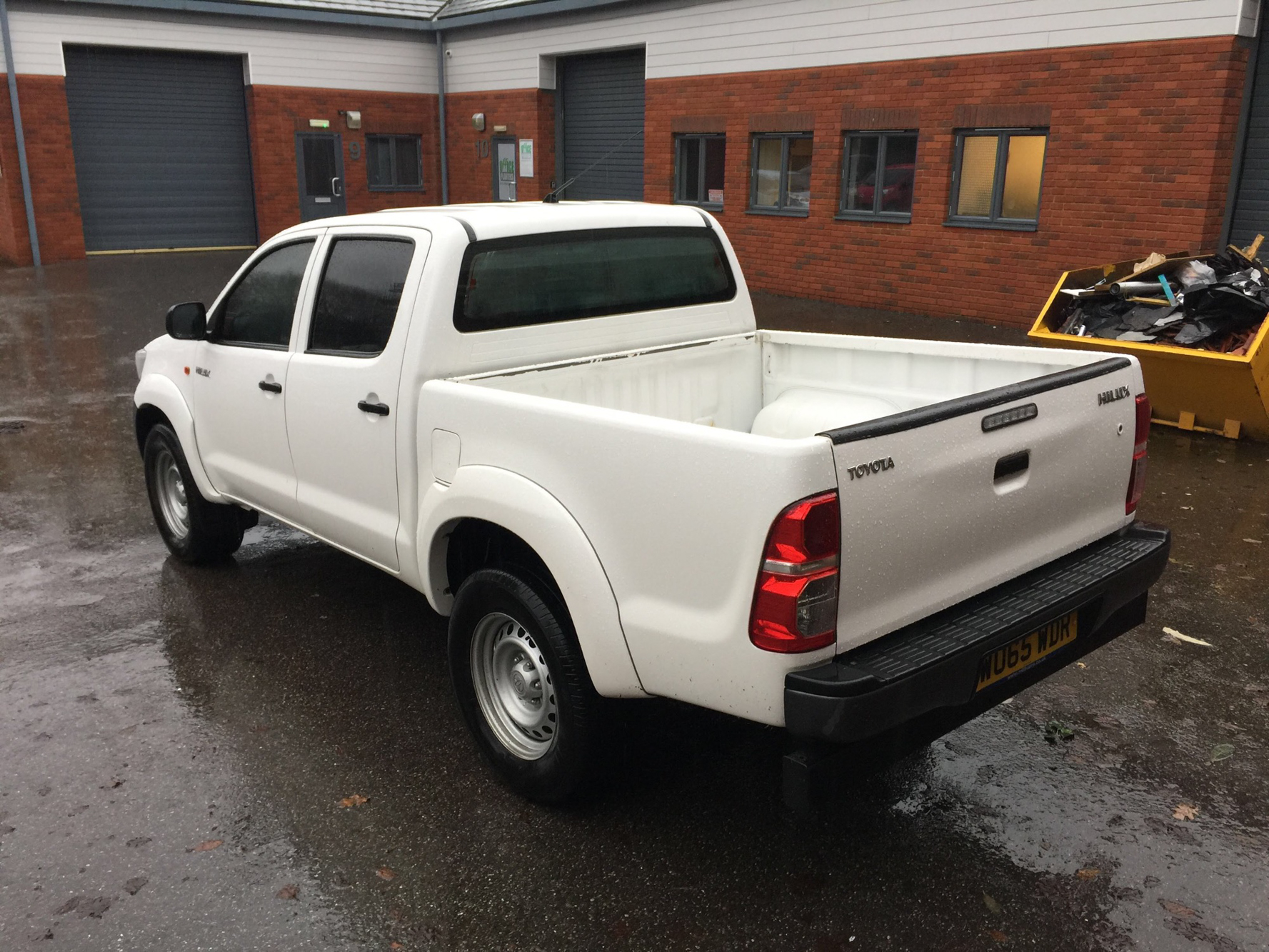
Canopy
Taking an angled aesthetic, the canopy (RSi SmartCanopy) is a colour-coded thing of robust beauty. Its utilitarian look adds to the “serious overlander” image. Made from automotive-grade stainless steel, the strength-to-weight ratio is three times stronger compared to aluminium or fiberglass. For us, that means the canopy is sturdy enough to weight-bear the rooftop tent, among other things—a small elephant probably. Unlike traditional hardtops, it’s modular so is bolted together to circumvent weld fatigue cracking. Namely, panels can be replaced should a juvenile elephant lean into one. My only request to improve the system is to make the locks bigger for ease of use. There is no central locking, and a squirt of WD-40 keeps the six locks shipshape. Chiefly, it ticks our boxes with easy gullwing access, weatherproof sealing, and comes in at 187 pounds.
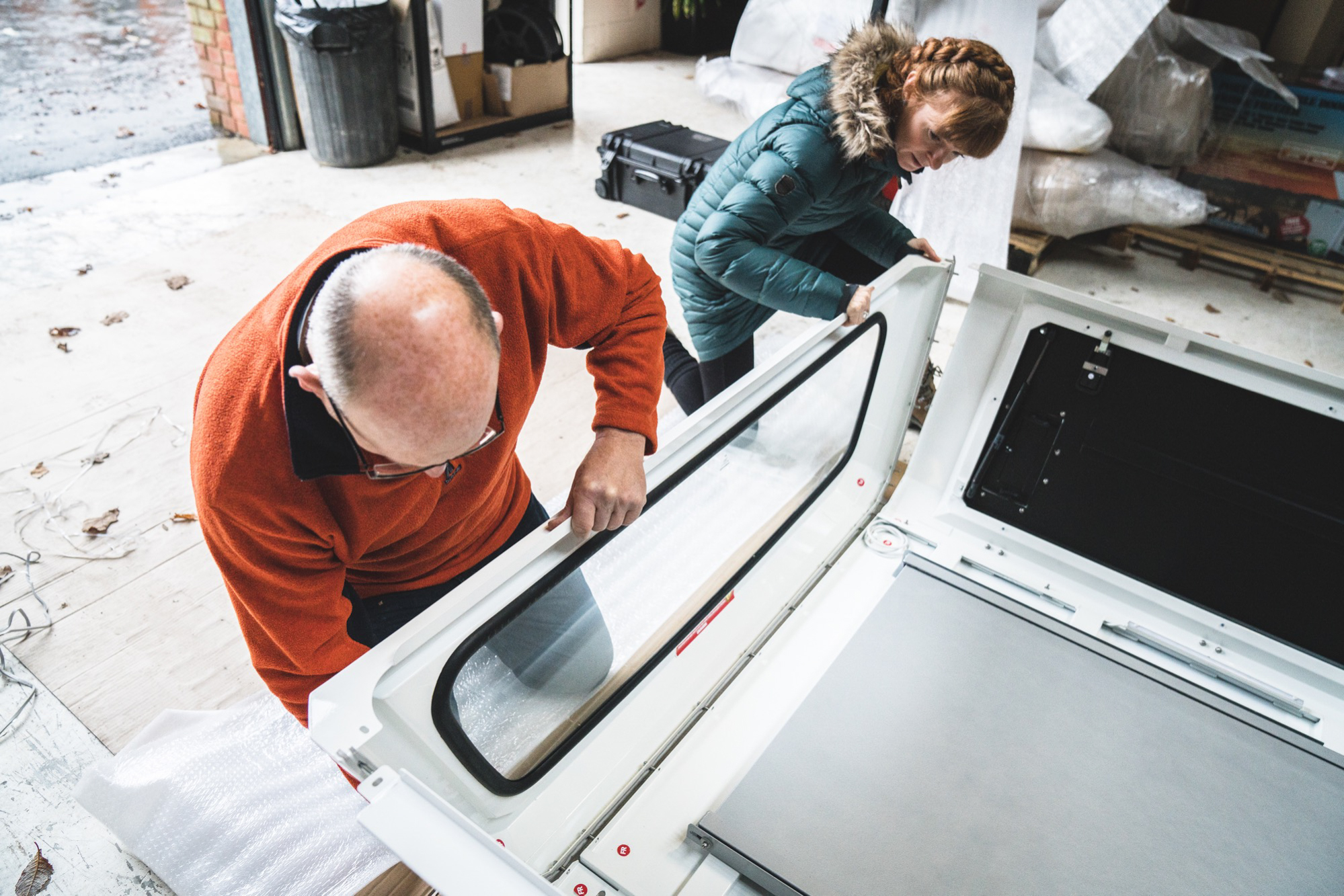


Kitchen
The kitchen unfolds on articulated arms (RSi SmartCanopy) and is equipped with refinements for four people, stowed inside foam-cut spaces. Initially, Jason wasn’t gushing about the real estate taken by it in the gullwing, but after our shakedown trip, conceded it was pure genius. In warmer, dry climes, the kitchen will come into its own. Better utilising the compartments to the needs of two overlanders, we’ve tailored the setup and supplanted a few items. Cleverly, a foldout table mounts in the canopy roof.
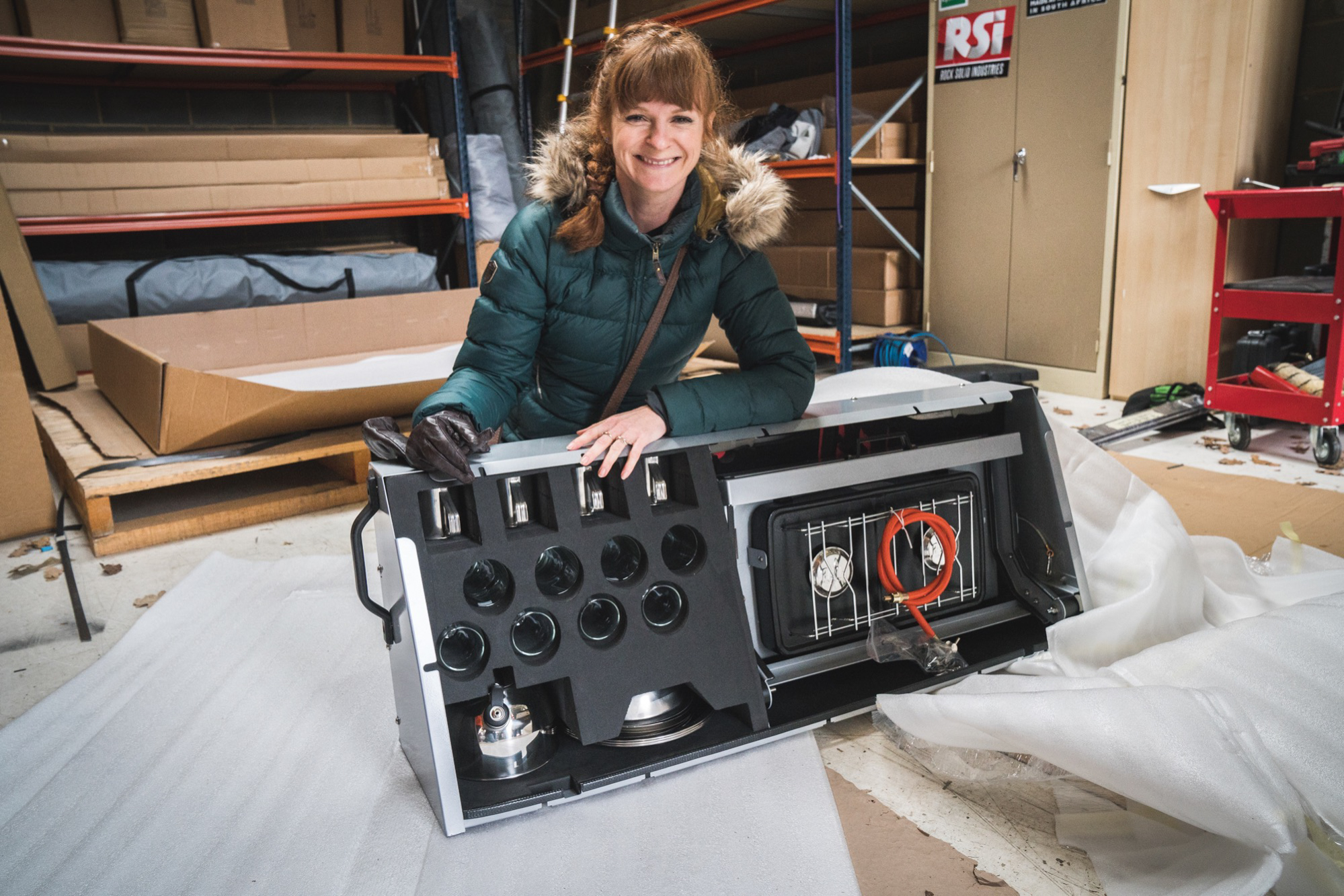
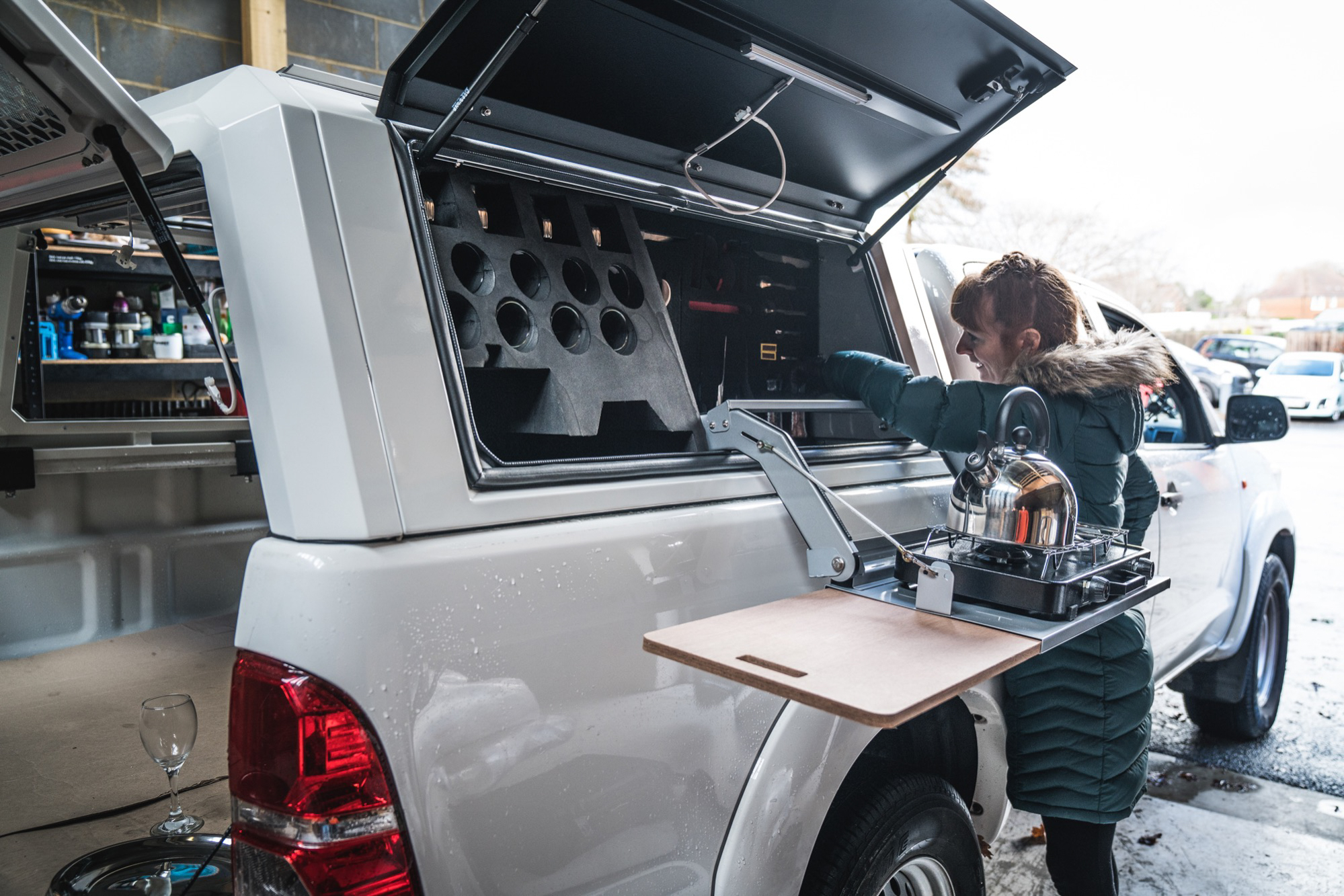
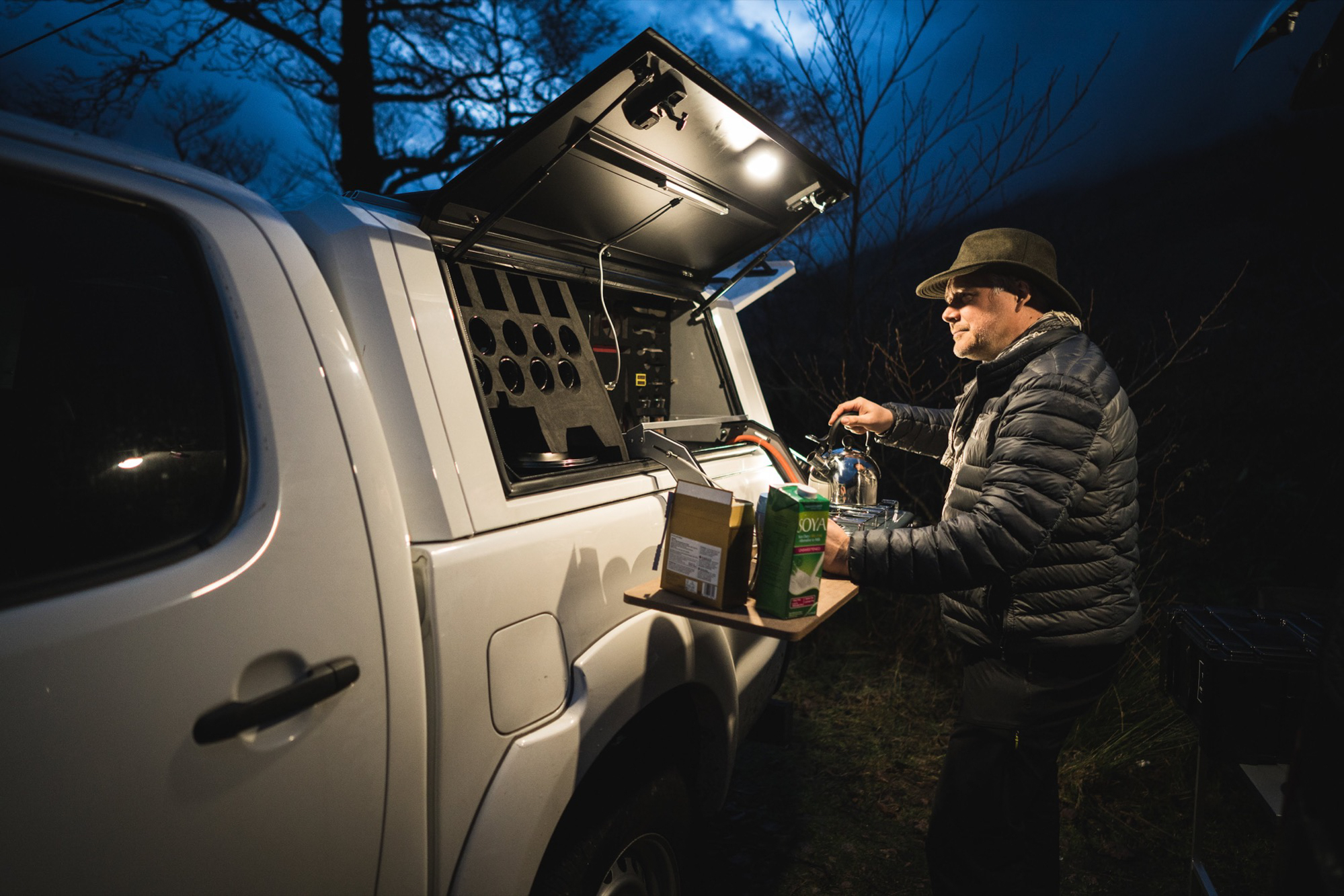
Rooftop Tent
Opting for the SkyCamp (iKamper) because it’s a lockable, easy-pop, four-birth hard-shell was a no-brainer. While the 300 GSM poly-cotton canvas isn’t as heavy-duty as others on the market, the construction is still durable. An additional rainfly adds to its weather-sealed properties, and because the tent is ventilated, it means the thing doesn’t condensate. Its biggest USP: setup time is a minute.

Opening the skylight, windows and a big porched door contribute to feeling connected to the outdoors, with mesh and blackouts on each. Foremost, the vistas are better because you’re higher up. Flexibly, the universal mounting system fits most vehicles. As weight-conscious but spacious homes atop of your 4WD go, it’s an Ewok special. The angled top offers protection from up to 50 mph wind when erected, while it’s unaffected at 75 mph packed. Like all canvas tents, once subjected to heavy rain, we air it out to prohibit mold, etc.
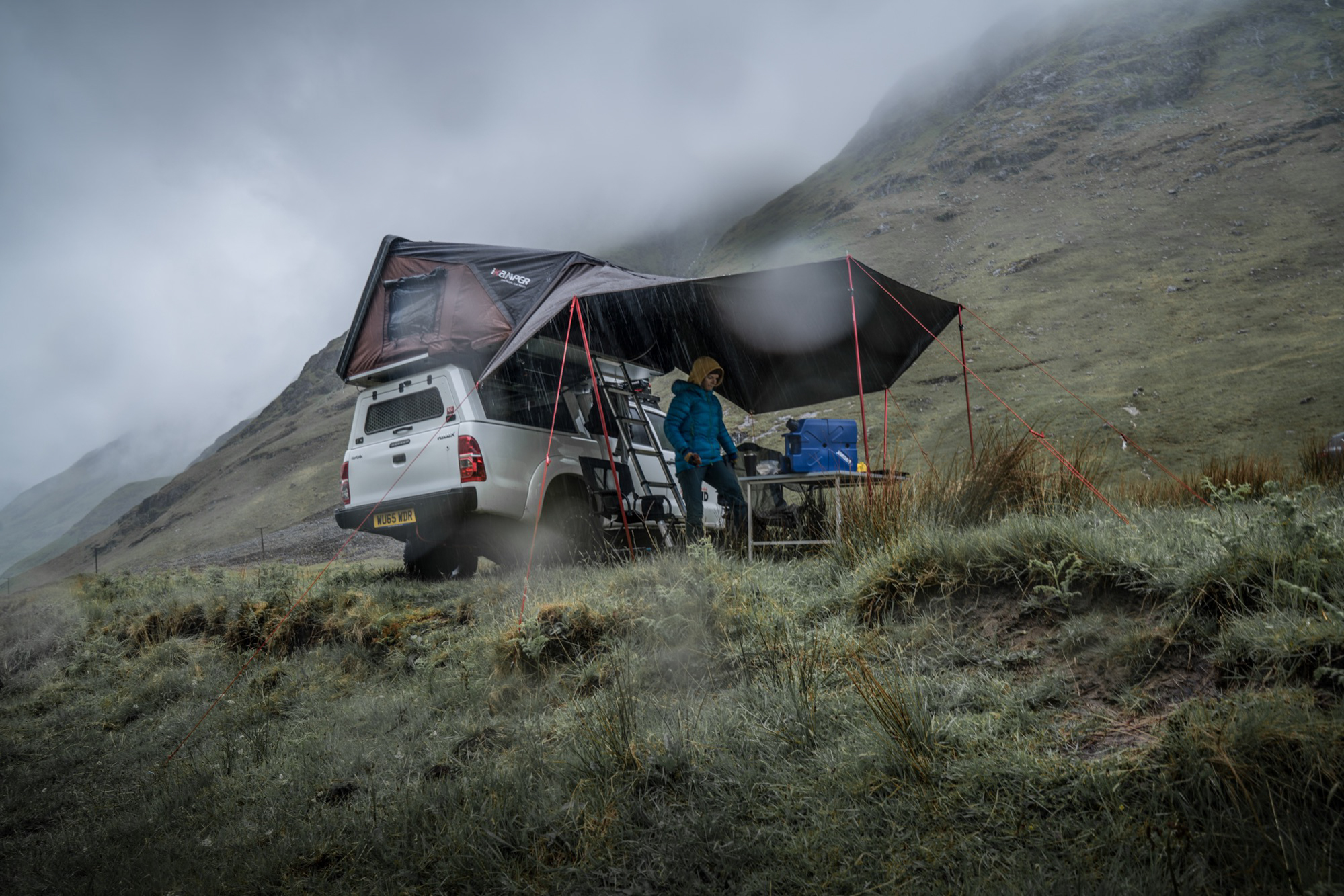
Drawer Slide and Cabinet system
A British custom-designed storage system (Gearmate) has revolutionised our load space. All lockable, the divided drawers offer 330 pounds of load capacity and extend 100 percent, which brings our gear on a gripped surface to us. The extended slide holds 880 pounds. Not a gripe per se, but I’d relish fewer keys; my keyring could compete with a jailer’s. 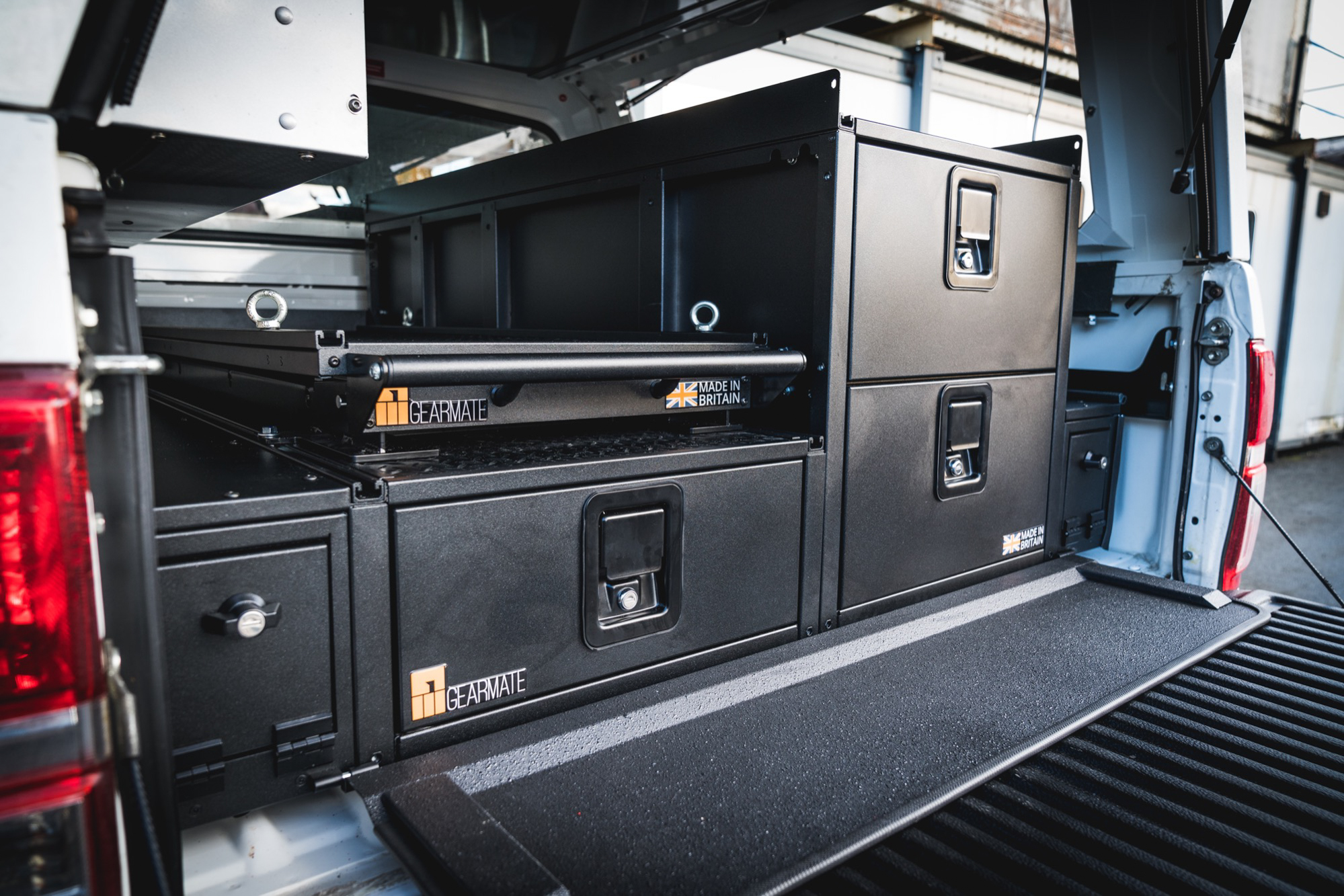
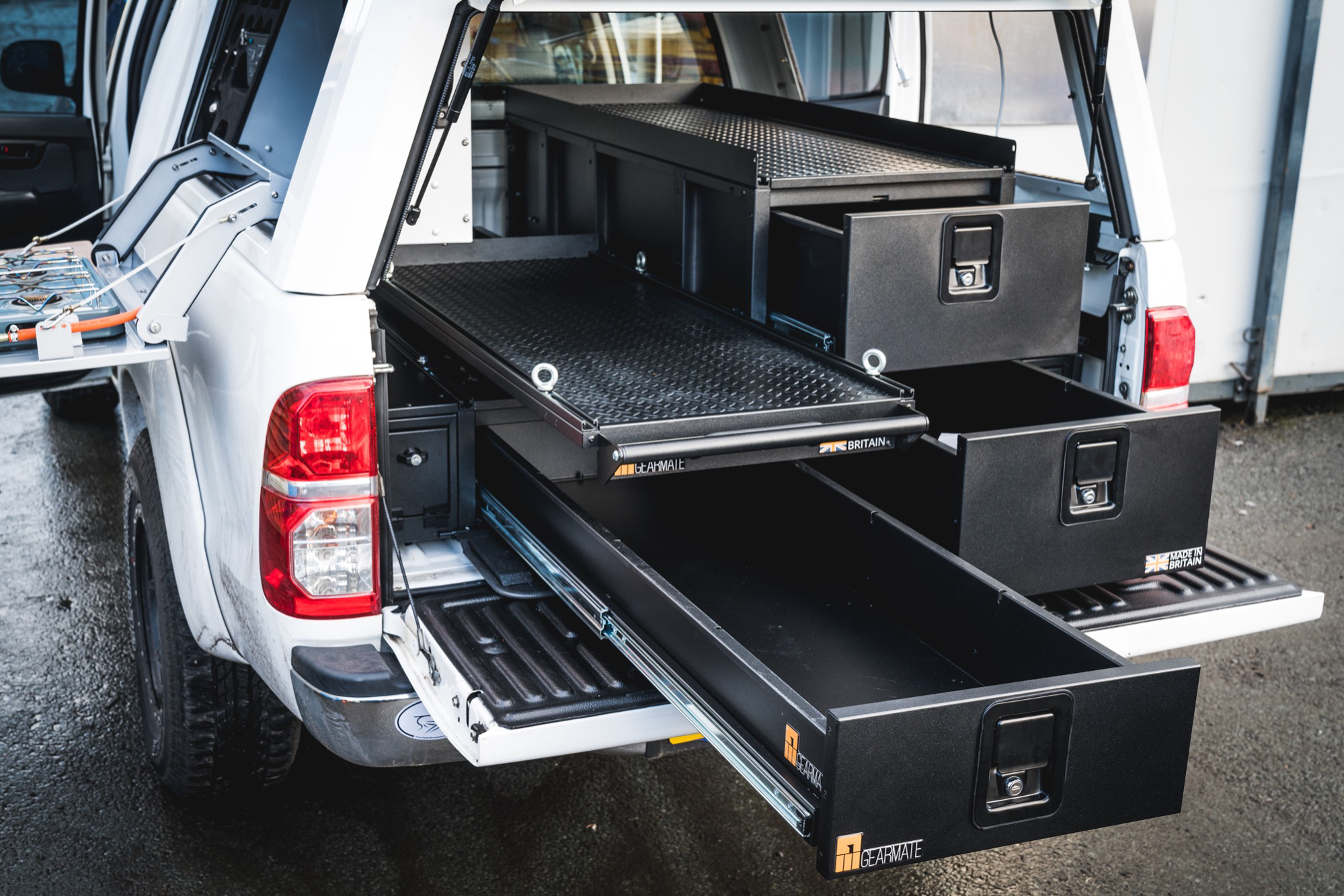
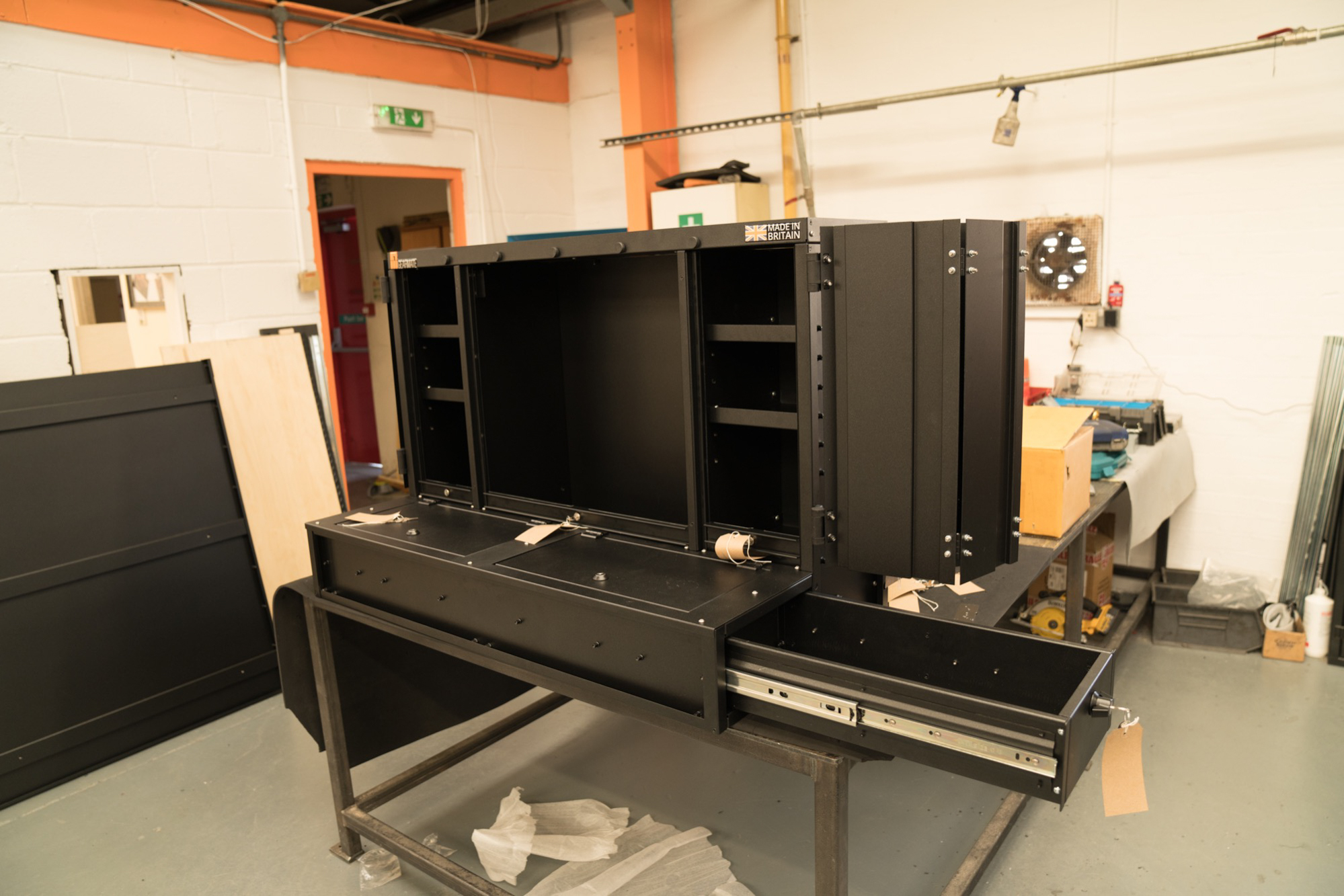
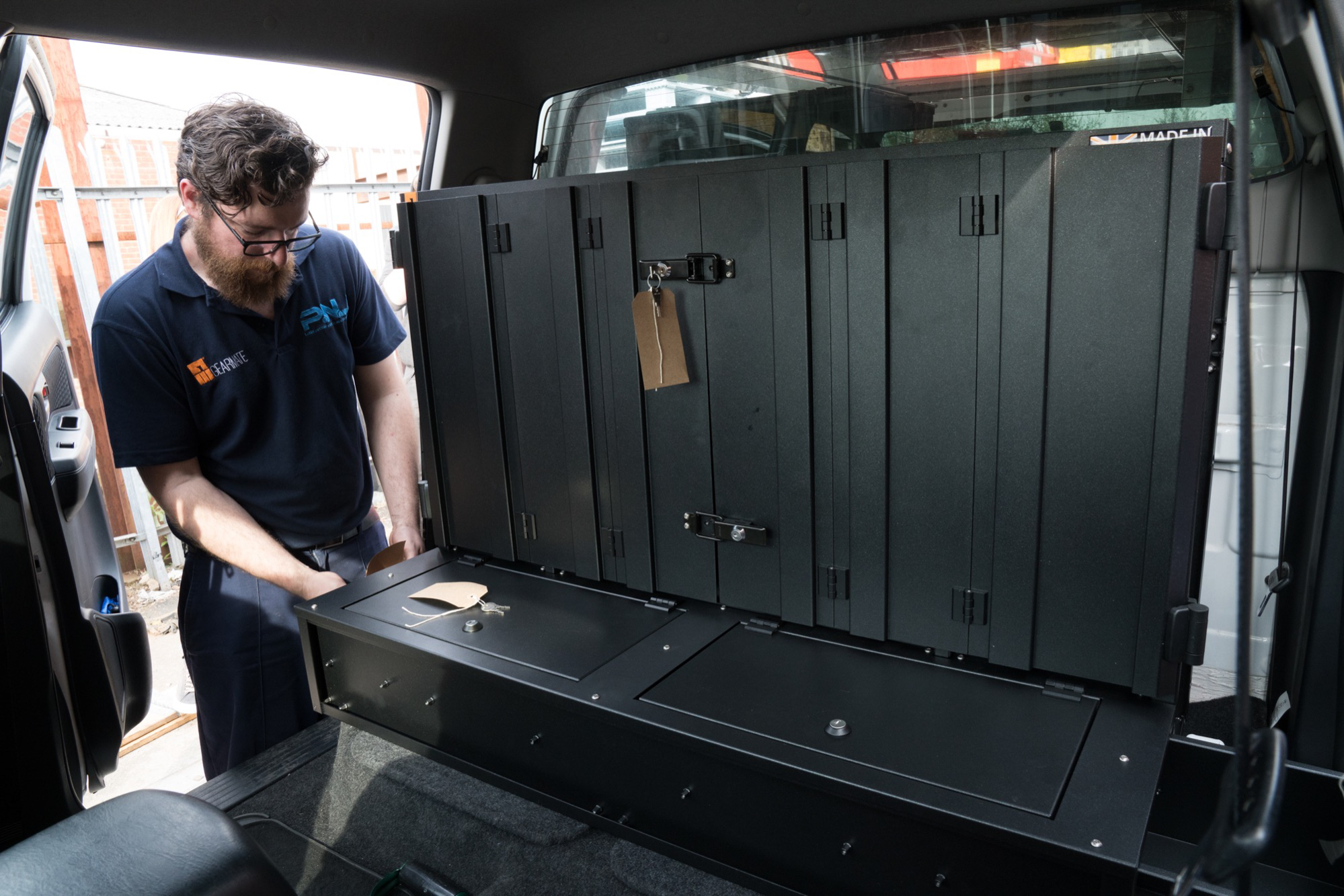
Wheels
Attractive without any bling and engineered to maximize caliper clearance, the 17-inch, satin-finish wheels (ICON Vehicle Dynamics) look the business. Lighter than steel, the alloy construction still provides strength, which coupled with proper backspace/offset dimensions, gives an agile performance off-road. Designed to optimize the wheel position for unhindered suspension and steering function, I’m sure they’ll keep us rolling.
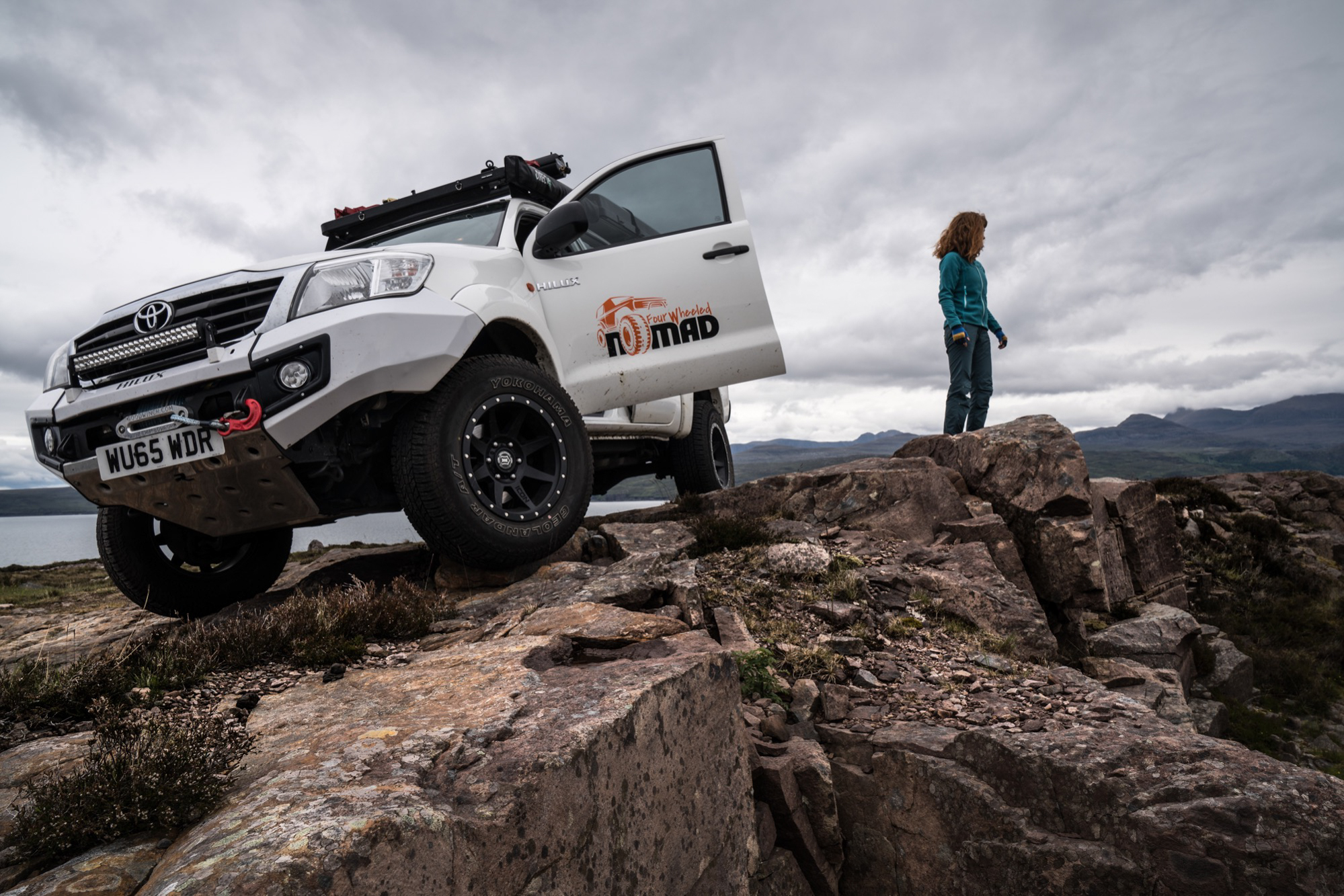
Tyres
Our needs around traction for the playgrounds up north and down south were straightforward: a set of all-season, 50:50 terrain rubber with tread more suited to mild off-road use. The Geolander all-terrain GO15s (Yokohama) offers good all-round performance in terms of grip, biting edges, and cornering characteristics on and off-road. Acoustics are quiet although there’s a little tyre talk on the motorways as you add speed. Backed by a 60K-mile warranty, the compound resists wear. Overall, they’re bang on.
Bumper
Jason confesses. The bumper was the only component where aesthetics took precedence over form. Wishing to maintain the original softer lines of the front, he shied away from a protruding, agricultural looking one. At over 100 pounds, the Rhino Evolution front bumper (Xtreme Sales 4×4) is a powder-coated compromise. Colour-matched, it provides ample protection, as does the heavy-duty bash plate. Full underside armour would have been nice, but at some point, you have to start investing in the trip. The only downside is that during installation, you’ll need to know how to use a wrench and be prepared to spend the day wielding it.
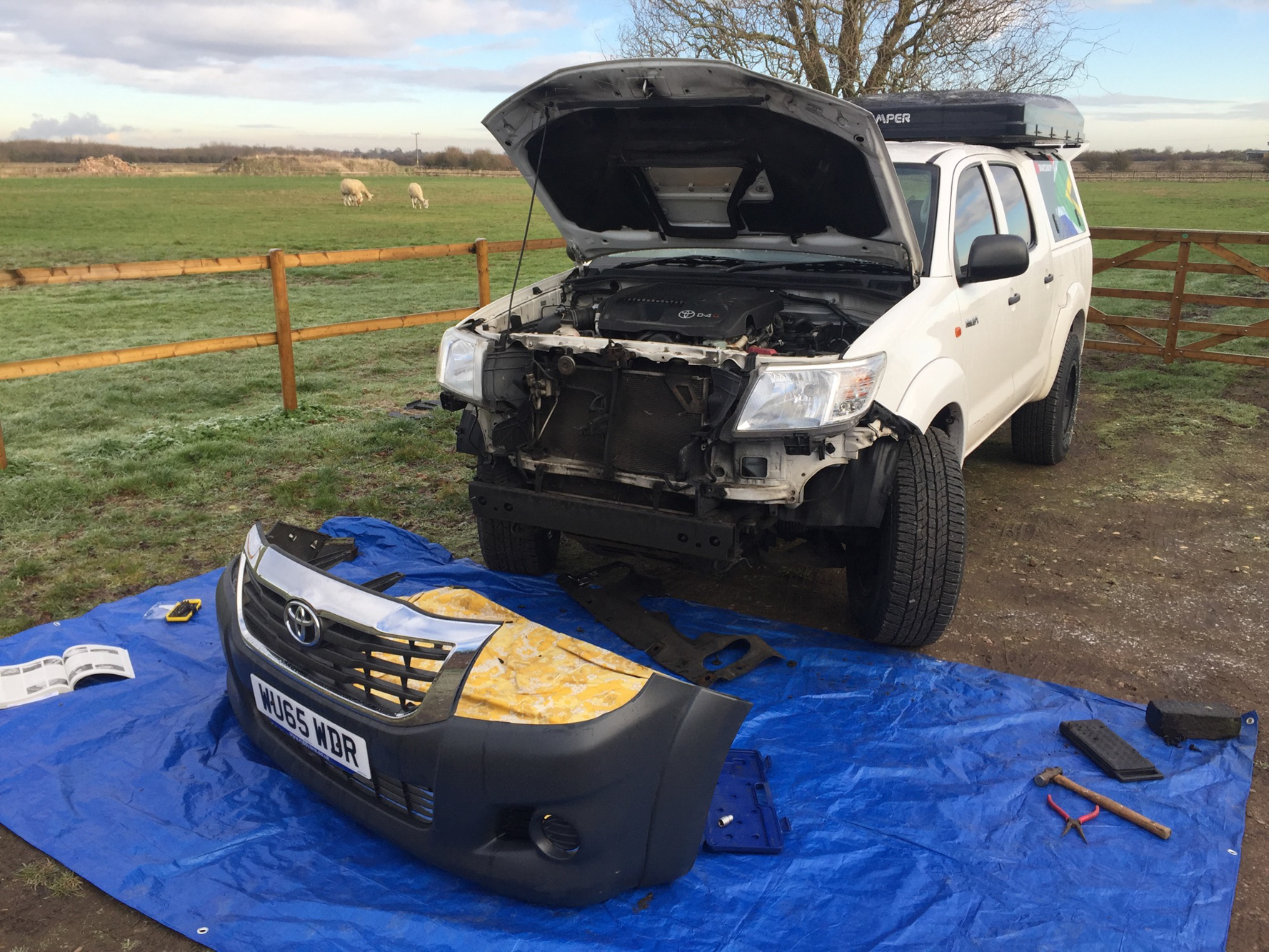
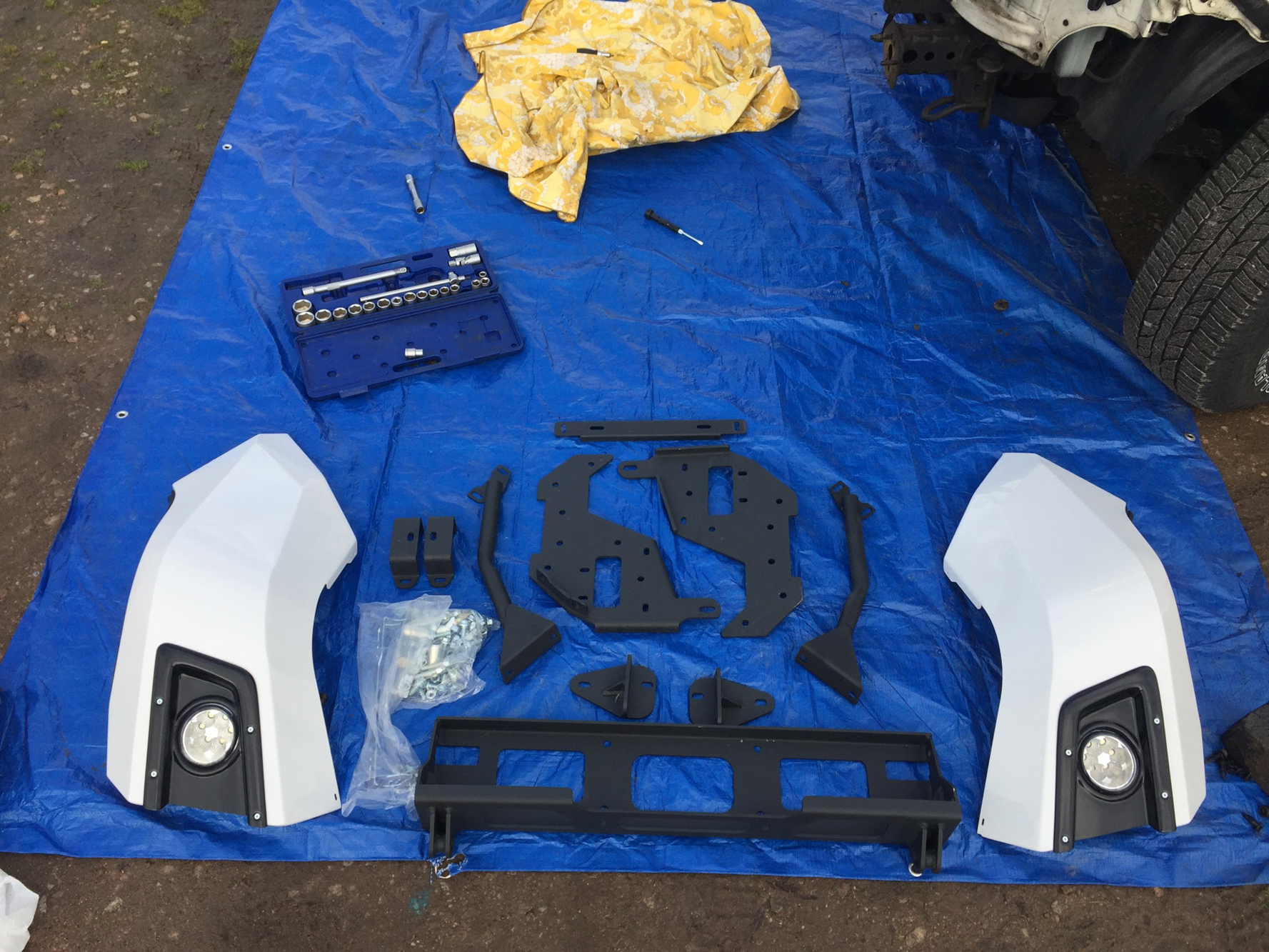
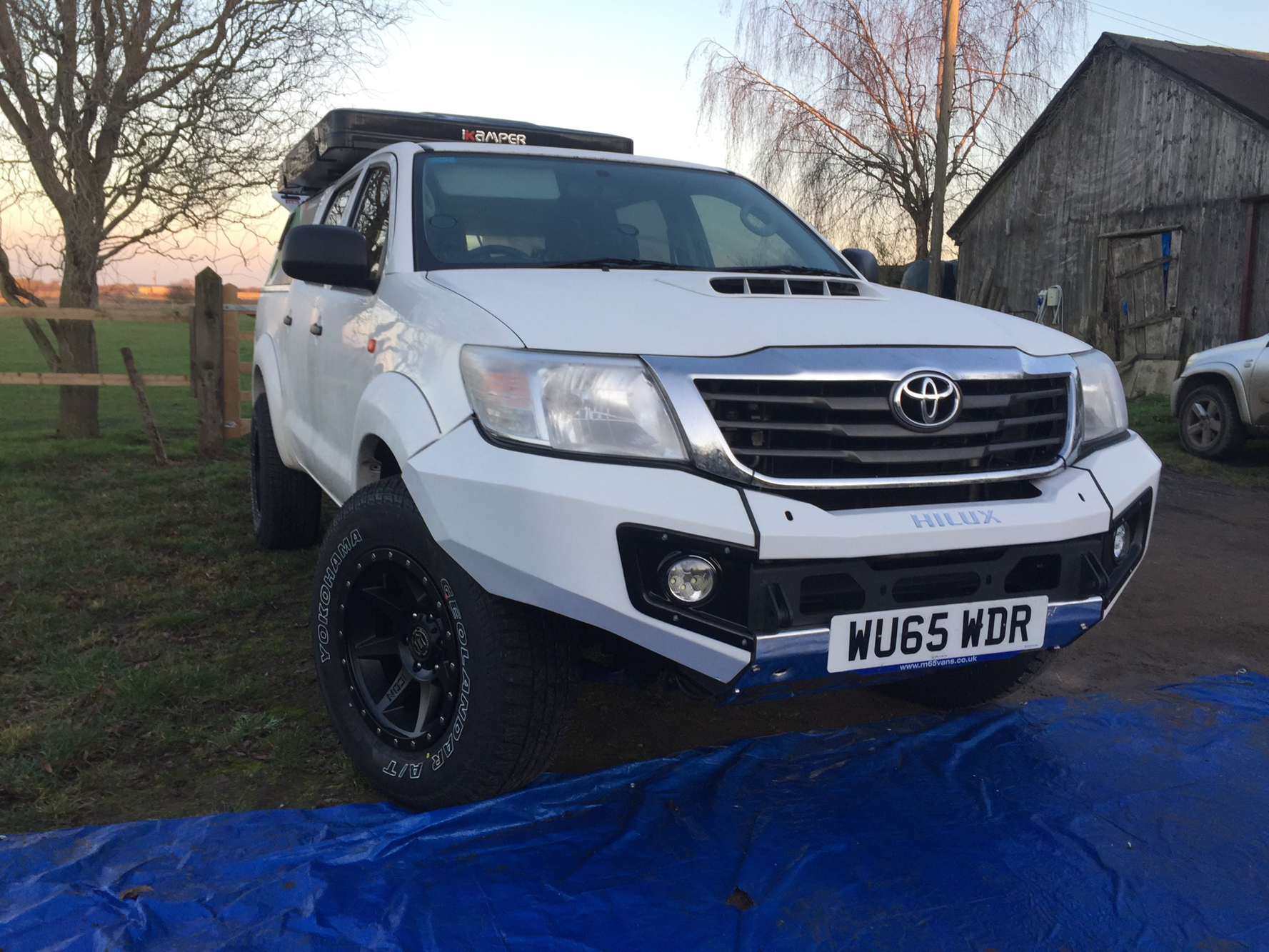
Lighting
To acquire full-featured lights, we went for an LED ensemble (Hard Korr Lighting). By comparison, the stock lights seem capable of illuminating a nighttime barbeque held by a family of ants. A 22-inch generation 3 light bar on the bumper is included. We swapped out the canopy’s stock lights for small LED strip lights. IP68 weather-rated, the strip lights are dimmable, draw minimal juice, and come in white and orange. Admittedly, I thought the latter setting was pointless, but the amber glow worked a charm in deterring Scotland’s maniacal bugs.
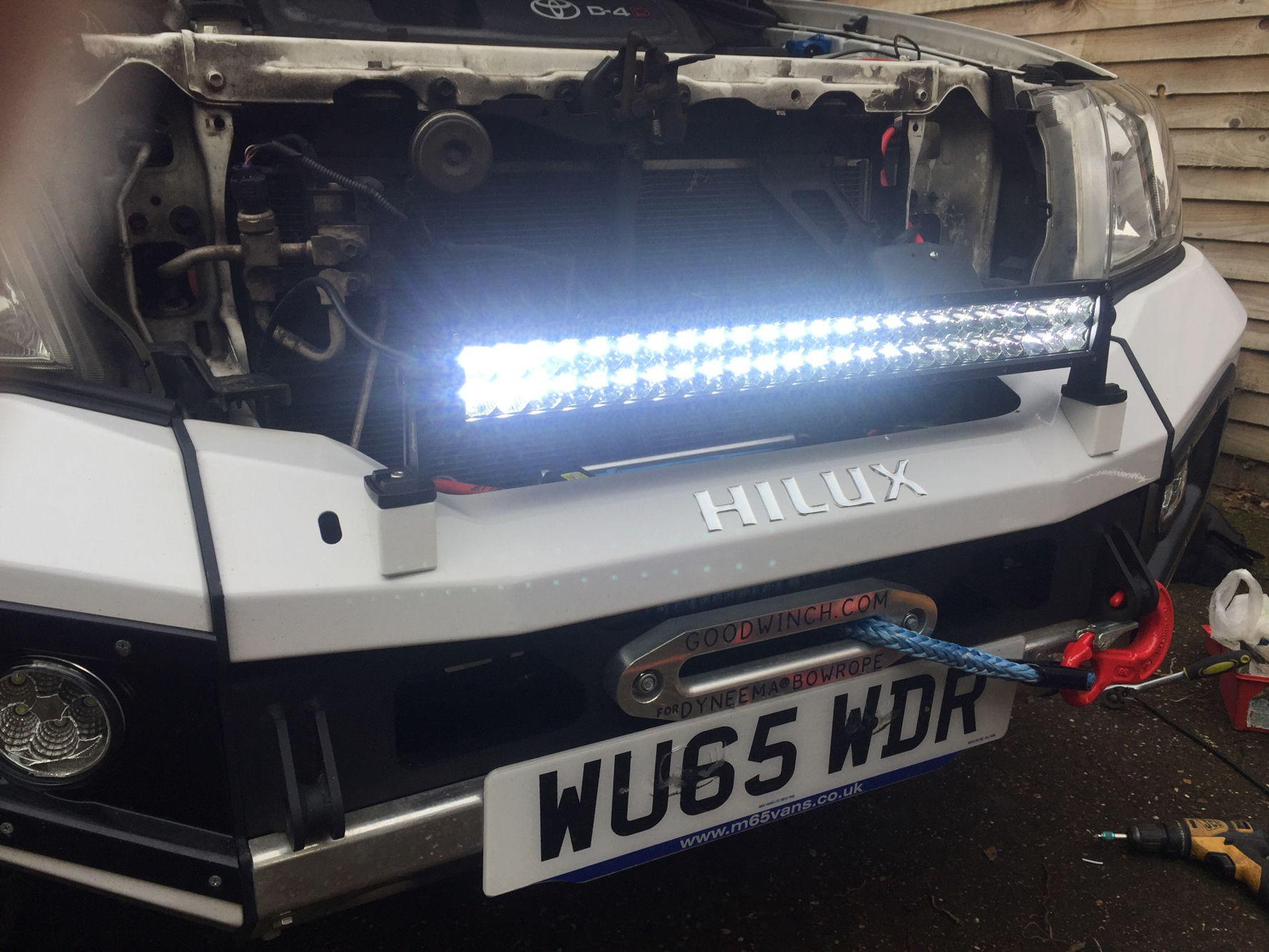
Roof Rack and Equipment
Before installing the roof rack, Jason cut it down to accommodate the space above the cab. This was due to the rooftop tent overhanging the area where the roof rack would normally be situated. Also part of the hardware is a Hi-Lift jack, MaxTrax, a shovel (Front Runner Outfitters), an assortment of spanners, sockets, wrenches, and screwdrivers, an air compressor, and a tyre-repair kit.
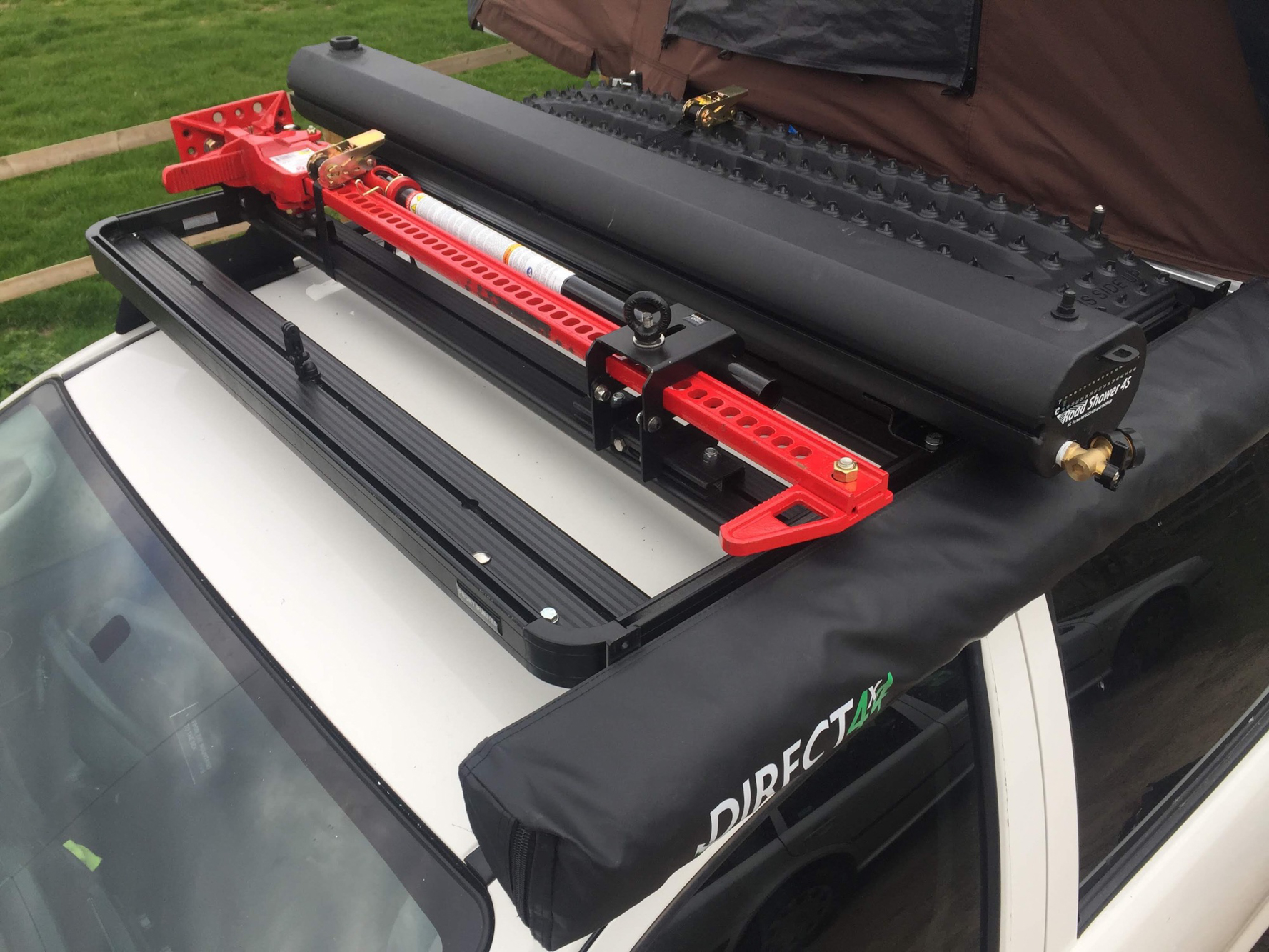
Rustproofing
Rustproofing was undertaken on the chassis.
Suspension
Our requirements for a suspension comprised the replacement of the cracked stock one for an upgraded solution to withstand a ton of payload on the upcoming terrain. With a 30 percent increase in wheel travel, the Stage 4 System (ICON Vehicle Dynamics) is more capable than the demands we’ll place upon it. Model specific-tuned shocks strike a balance between on-road ride quality and off-road performance. Aircraft-grade aluminium and corrosion resistance come as standard; essentially, the suspension greatly enhances the journey.
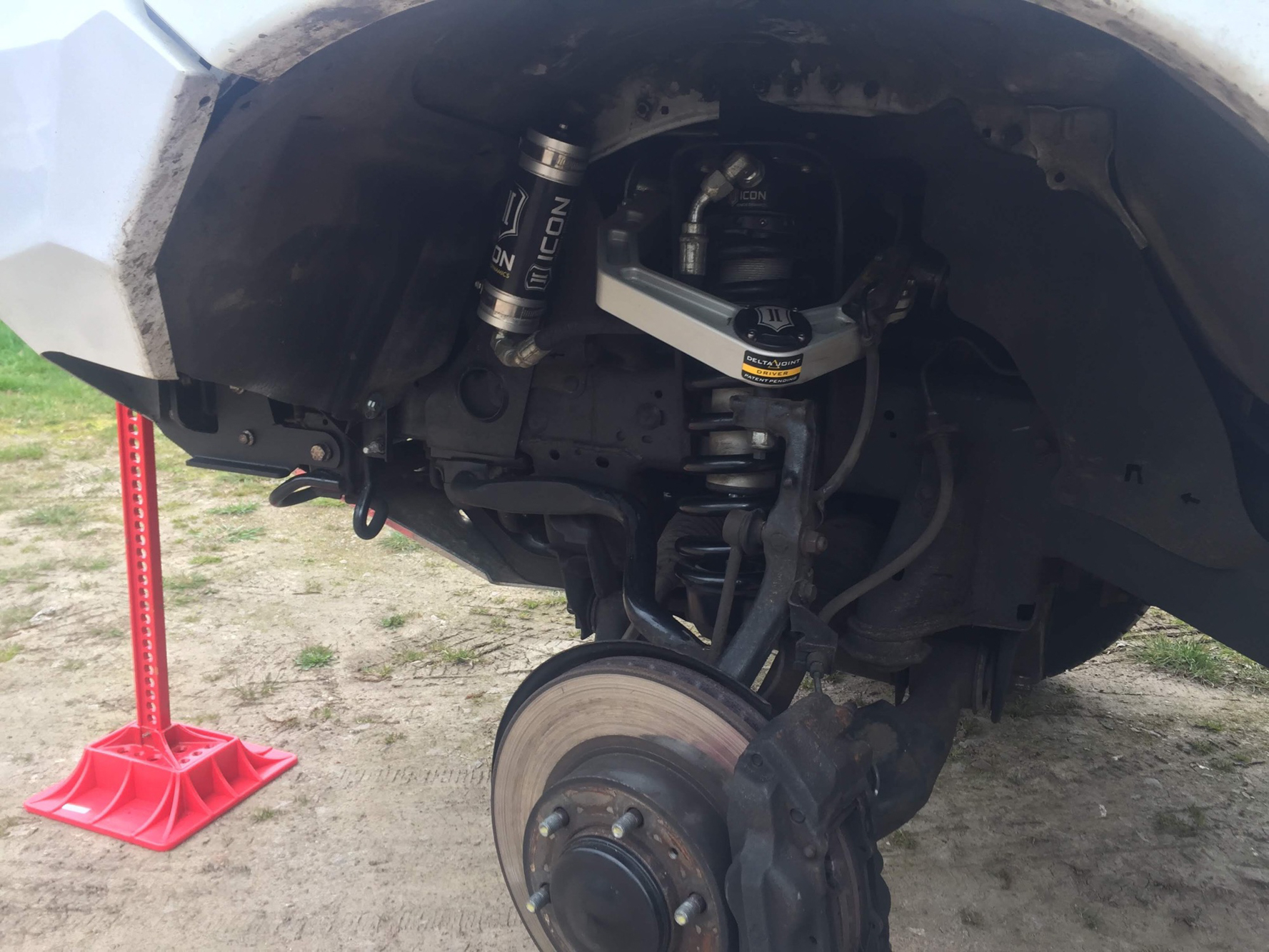
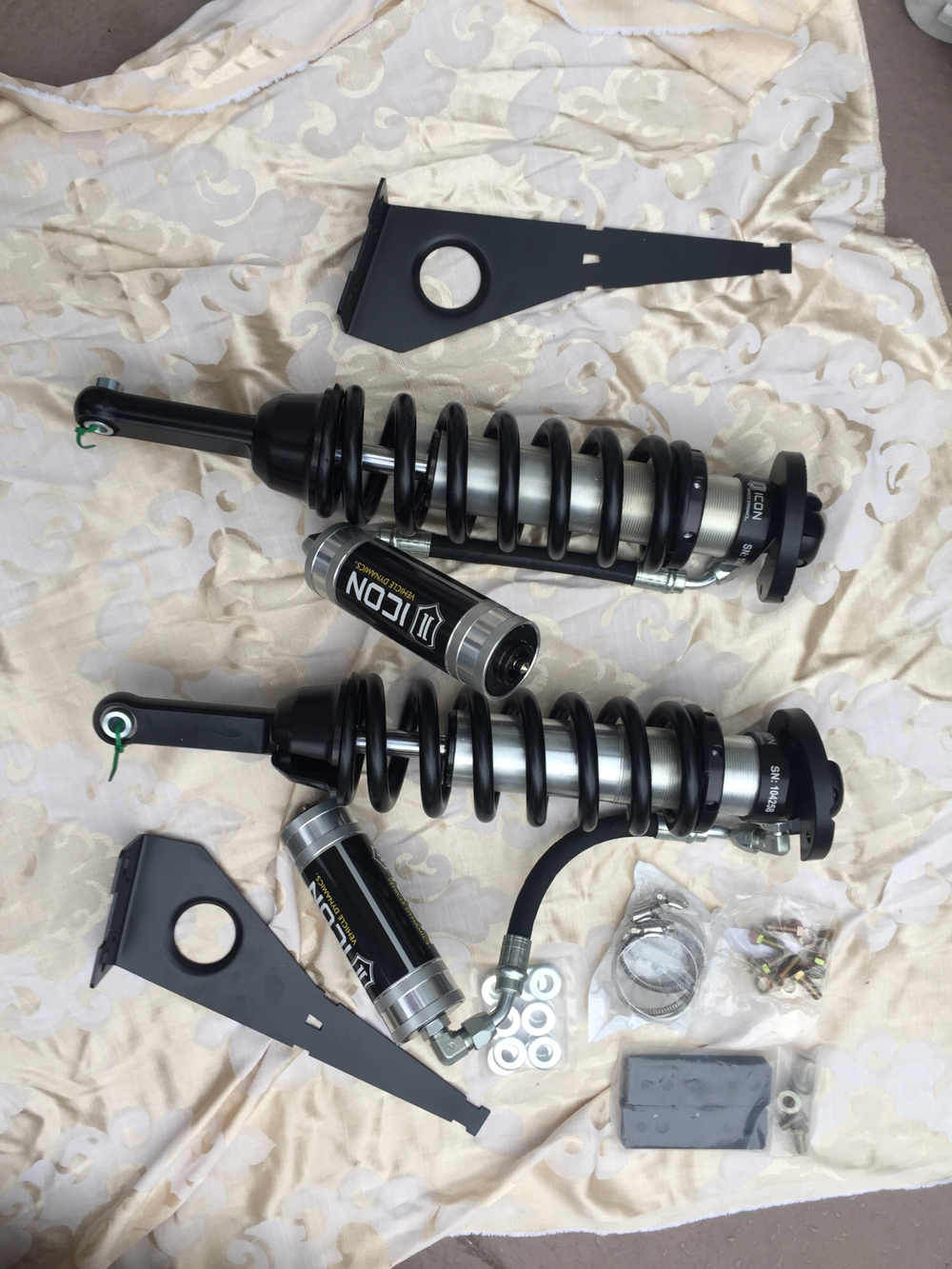

Water and Gas
10-gallon water tank (Front Runner Outfitters)
4.5-gallon water-purifying jerry can (LifeSaver)
4.5-gallon jerry can
2.85-gallon gas bottle
Refrigeration
While our previous means of a fridge astride the motorcycles constituted an insulated water bottle, we’re in seventh heaven with a portable CFX50 electric cooler (Dometic). There are 10.5 gallons worth to stockpile food and drink, that’s the tea and crumpets sorted. Quietly, the compressor consumes little energy, so the box performs consistently on minimal power. If desired, the space can be converted into a freezer.
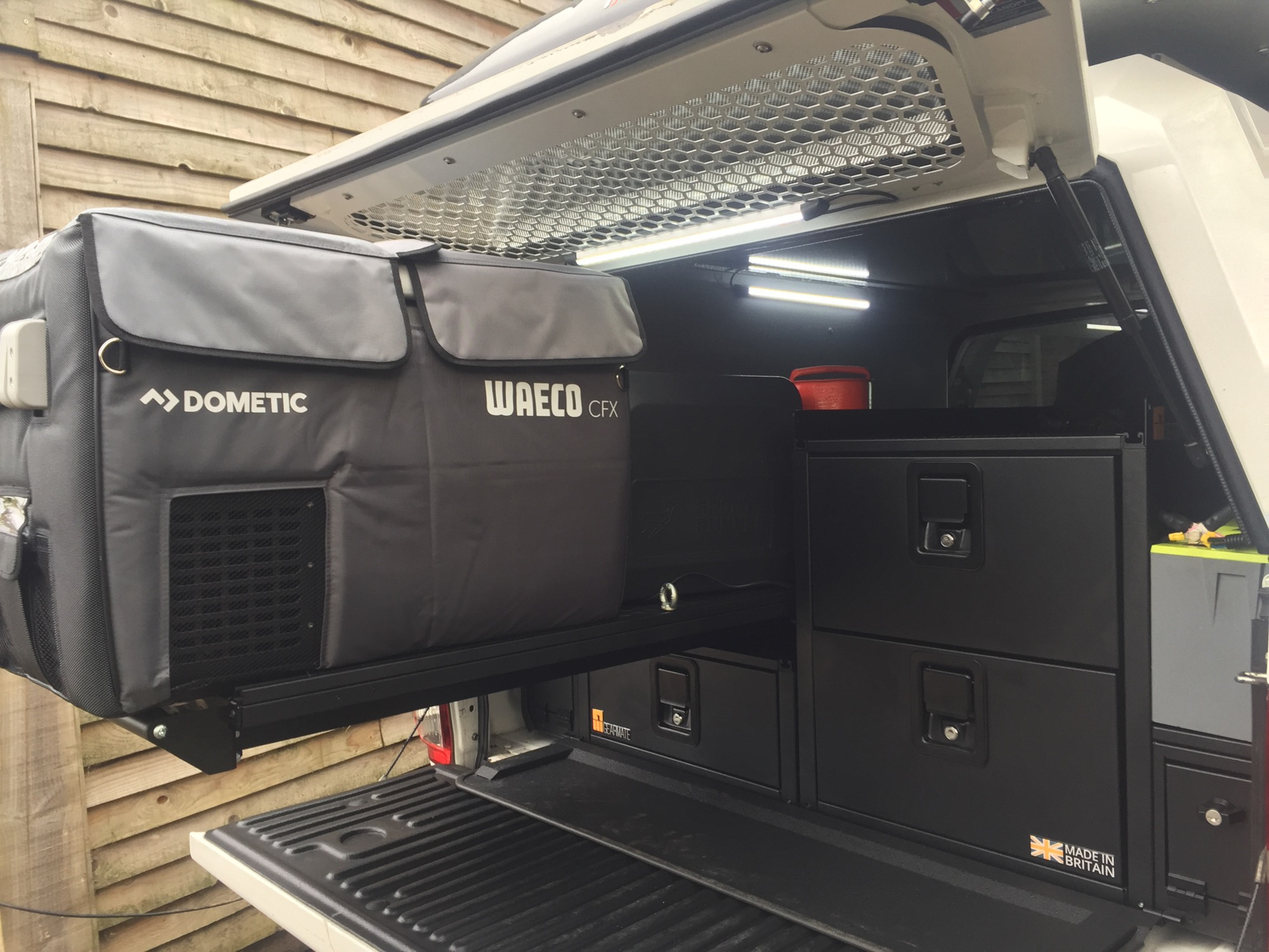
Batteries
In our power pack, we rely on a lithium leisure battery (Transporter Energy), a sinewave inverter, and battery charger (Dometic). On top, an IP44-rated portable leisure battery 40Ah (Dometic) sounds compact but is mighty: it has the power to keep the fridge running for up to four days on a single charge. However, we utilise the PLB40 for its 12-volt cigarette lighter and solar panel functionality: to charge laptops, drones, and camera batteries. In addition to having shore power, we’ve situated mains power via the inverter and USB ports in the double cab, the back of the truck and in the rooftop tent. Plugging in anything that’s 230-volt is overlanding bliss.

Solar
There’s probably no better piece of kit in our possession than our solar panels, which absorb the rays 24/7 (depending on the location). Two 100-watt flexible solar mats (Hard Korr Lighting) affixed to the tent’s hard shell accomplish this aim. They are necessary due to the amount of “tech” we charge daily, and ultimately, keeping everything on when you’re off-grid.
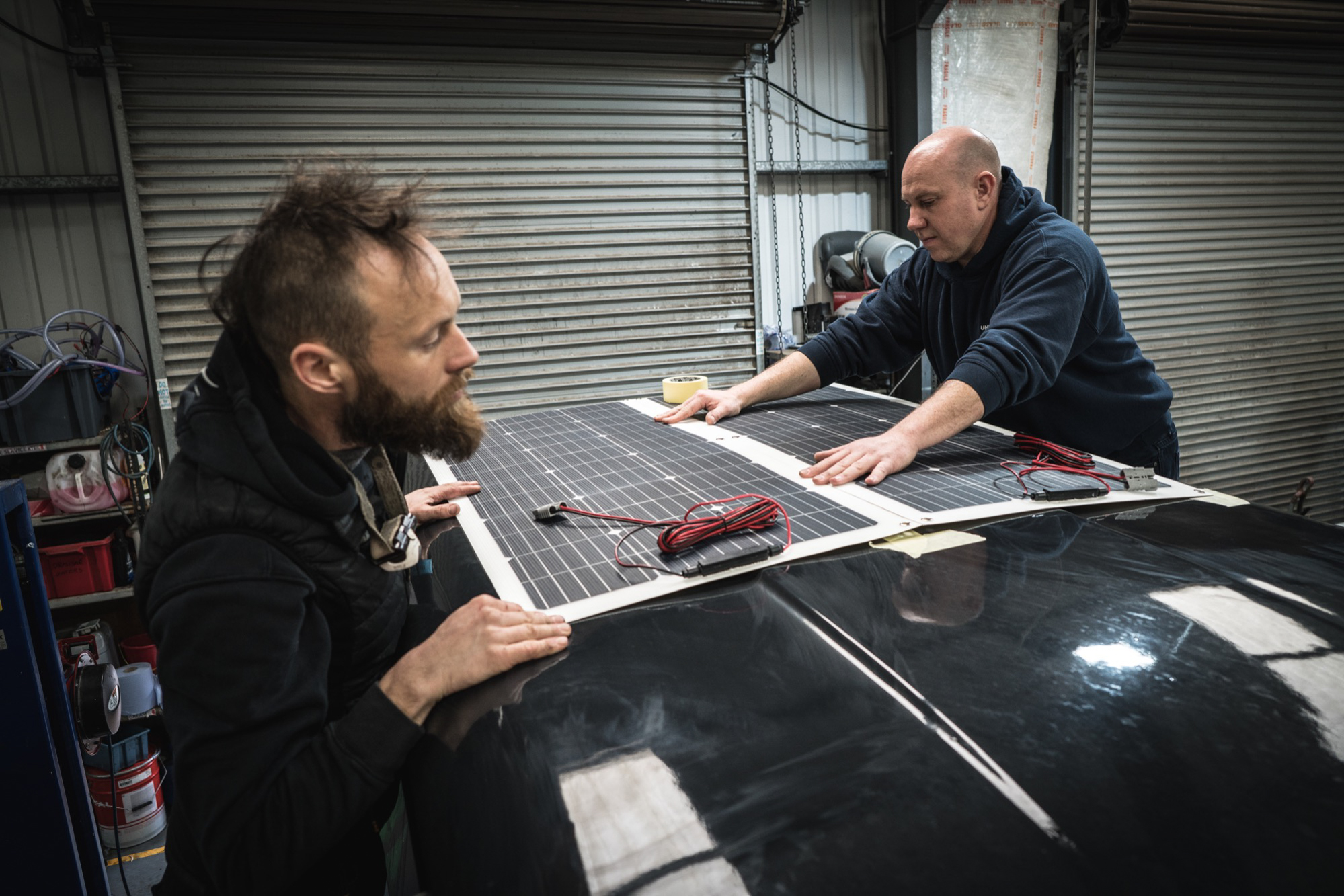
Navigation
Unequivocally, we’d never be on the road without a GPS. Maps for 44 countries, the Columbia 945 (Dometic) is a one-stop shop; it’s a hands-free phone, WiFi-enabled and plays movies via USB. Easy to be clueless about one’s length when you’re backing up a rig that’s over 17-feet long, a backup camera is also pricelessly in attendance. 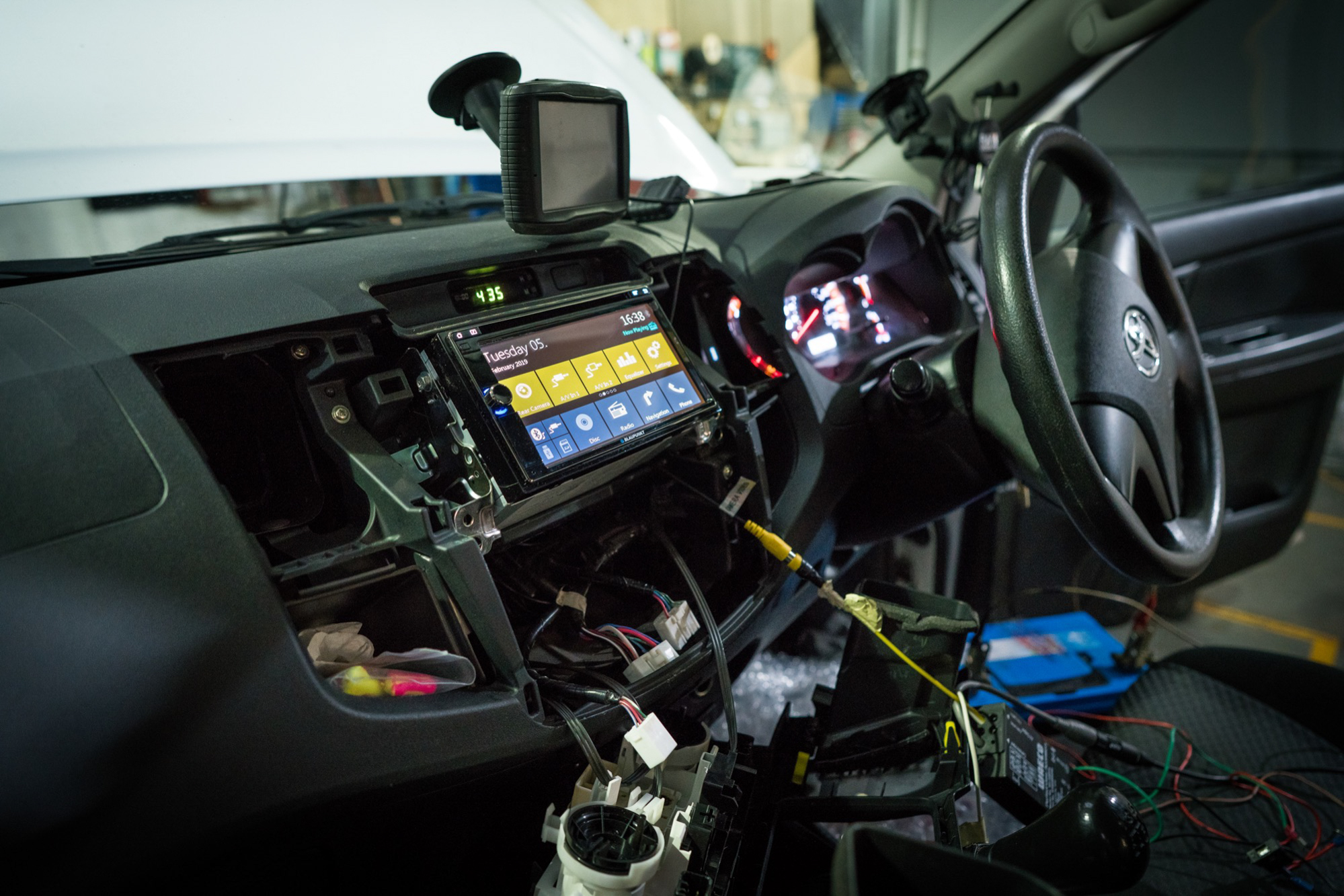
Extra fuel
We have a 5-gallon, fuel-safe bladder (Giant Loop) but we’ll carry more in Africa.
Winch
Some winches come with alarming price tags. Having read a published review featuring the more affordable TDS 9.5C (Goodwinch) as number one in a Top Ten among the pricier, big brands, we were sold. Drawn in by its weather-sealed properties, the TDS’ mechanicals are always ready for work and the spare’s backup is good, too. The Dyneema Bowrope floats, is light, and incredibly strong. In fact, the British military uses it. The brand isn’t as well known as the industry’s major players; it is, however, a doddle to use and dependable.
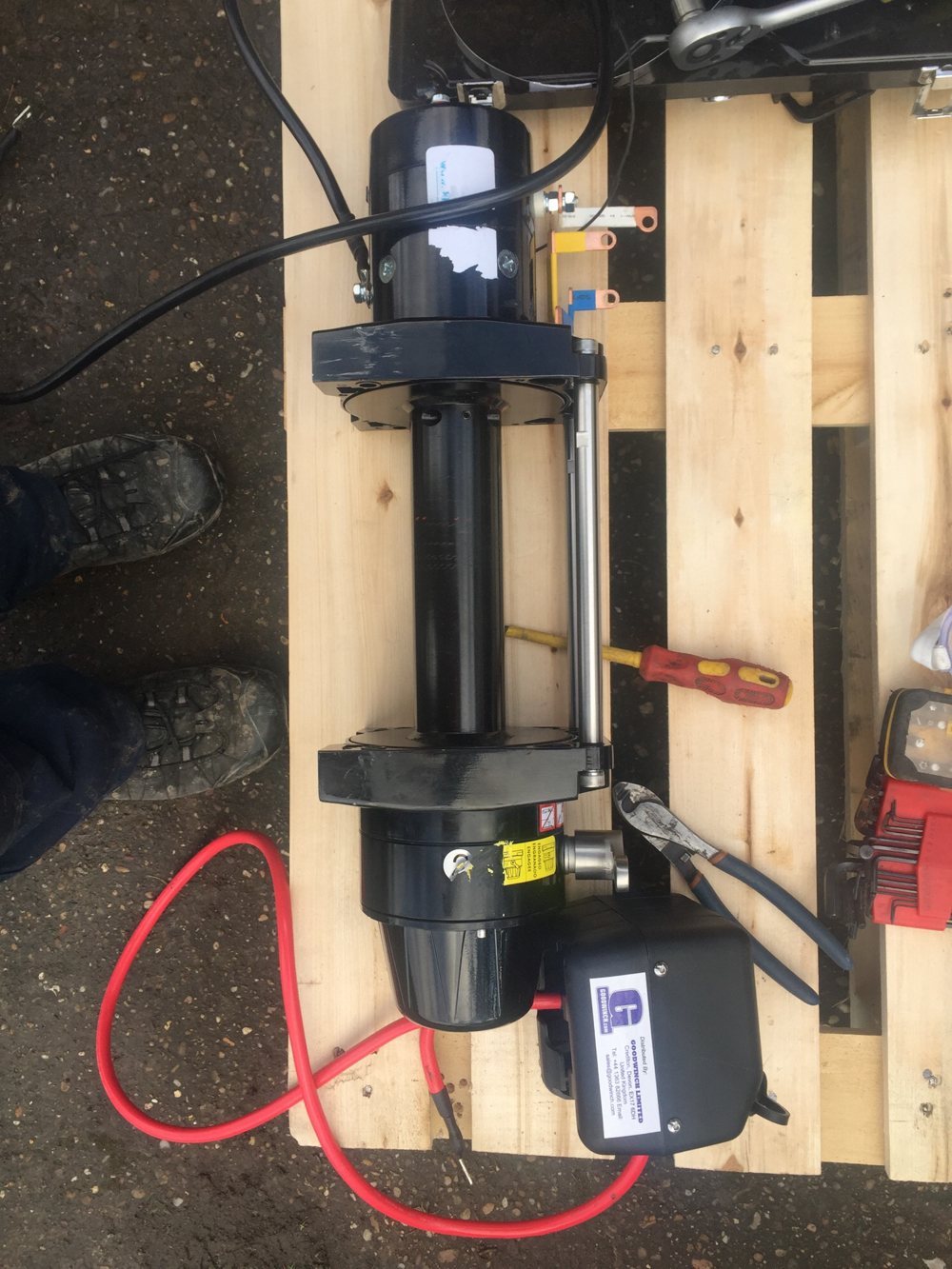
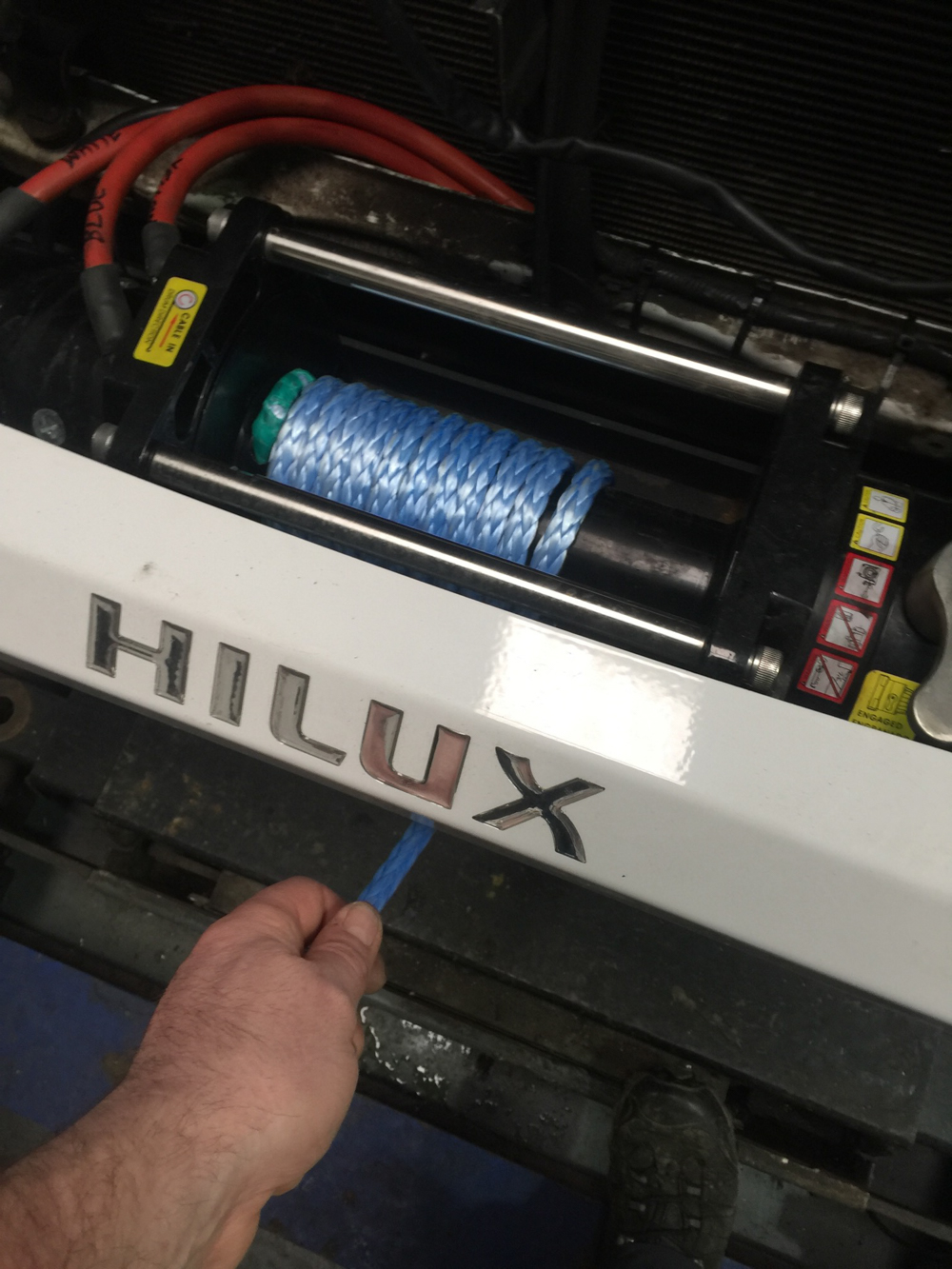
Awnings
Providing refuge from the elements, the main awning (iKamper) zips onto the rooftop tent and stakes out, giving ample protection under which a party of people with their gear can take cover. The employment of two more poles would have taken its sturdiness in wind from good to great.
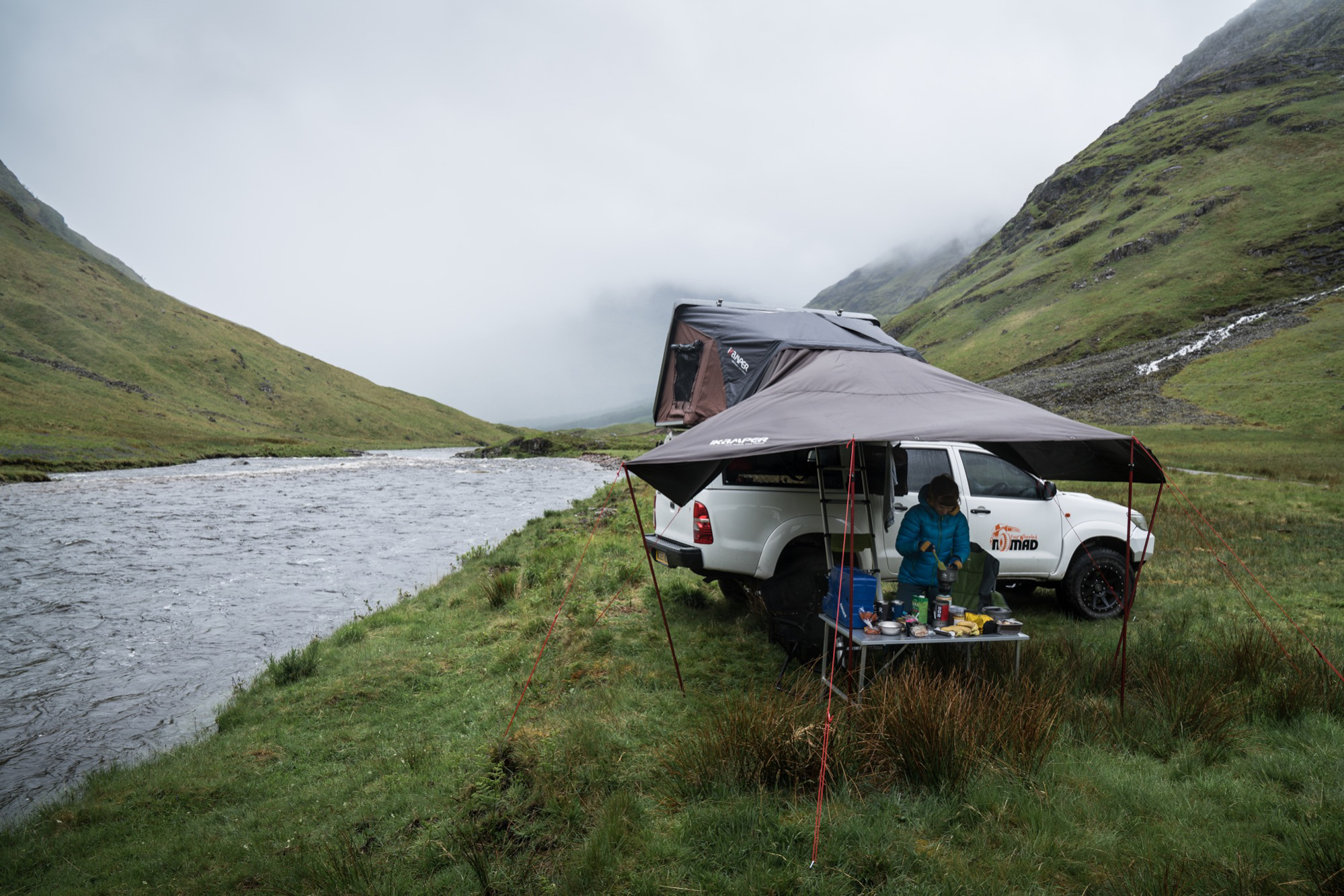
Shower
The 4-gallon shower (Road Shower) is a high-pressure water system. Easy to mount, it’s a streamlined way to carry additional water outside the vehicle. Bound by limited real estate on our roof, 4 gallons isn’t a massive volume but is plenty for us both to wash. Granted, the next size up (7 gallons) would afford more showers. Alas, if it’s not warm out, the water won’t be hot; we add boiled water to overcome that. A foldout expedition tent (Direct 4×4) throws dignity into the mix. Aquacadabra!
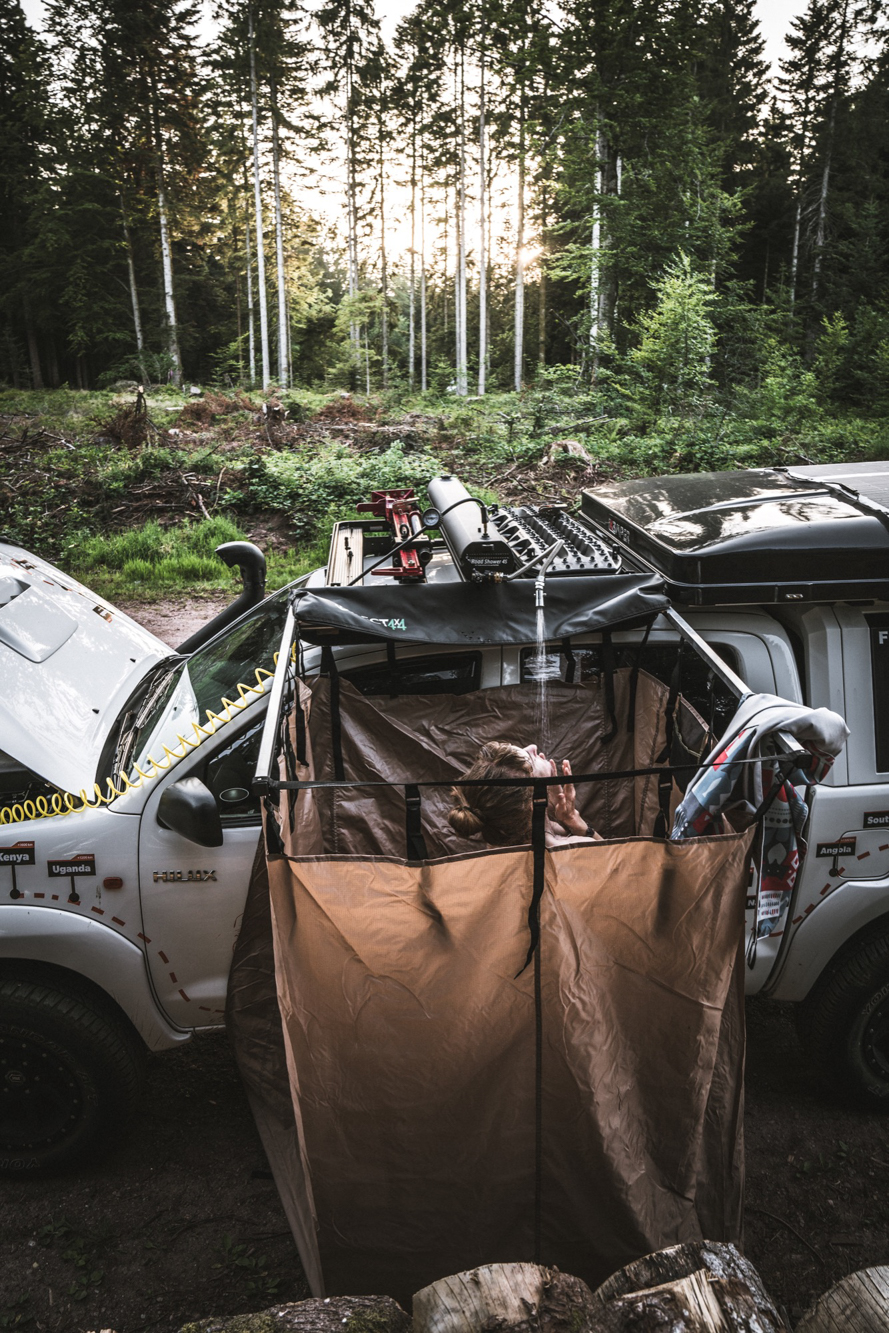
Snorkel
Mandatory components in any 4WD overlander’s arsenal include those that keep your engine happy. Sealed, the Ironman 4×4 Snorkel (West Coast Off-road Centre) does what any decent snorkel should; it raises the air intake taken from an elevated point preventing water and dust ingression. Guaranteed for five years, the moulded polyethylene withstands impact as it brings style. The only backside cardio-inducing moment happens if you have the skill to cut the hole into the wing yourself. Get that right, and a few hours later, the job’s done.
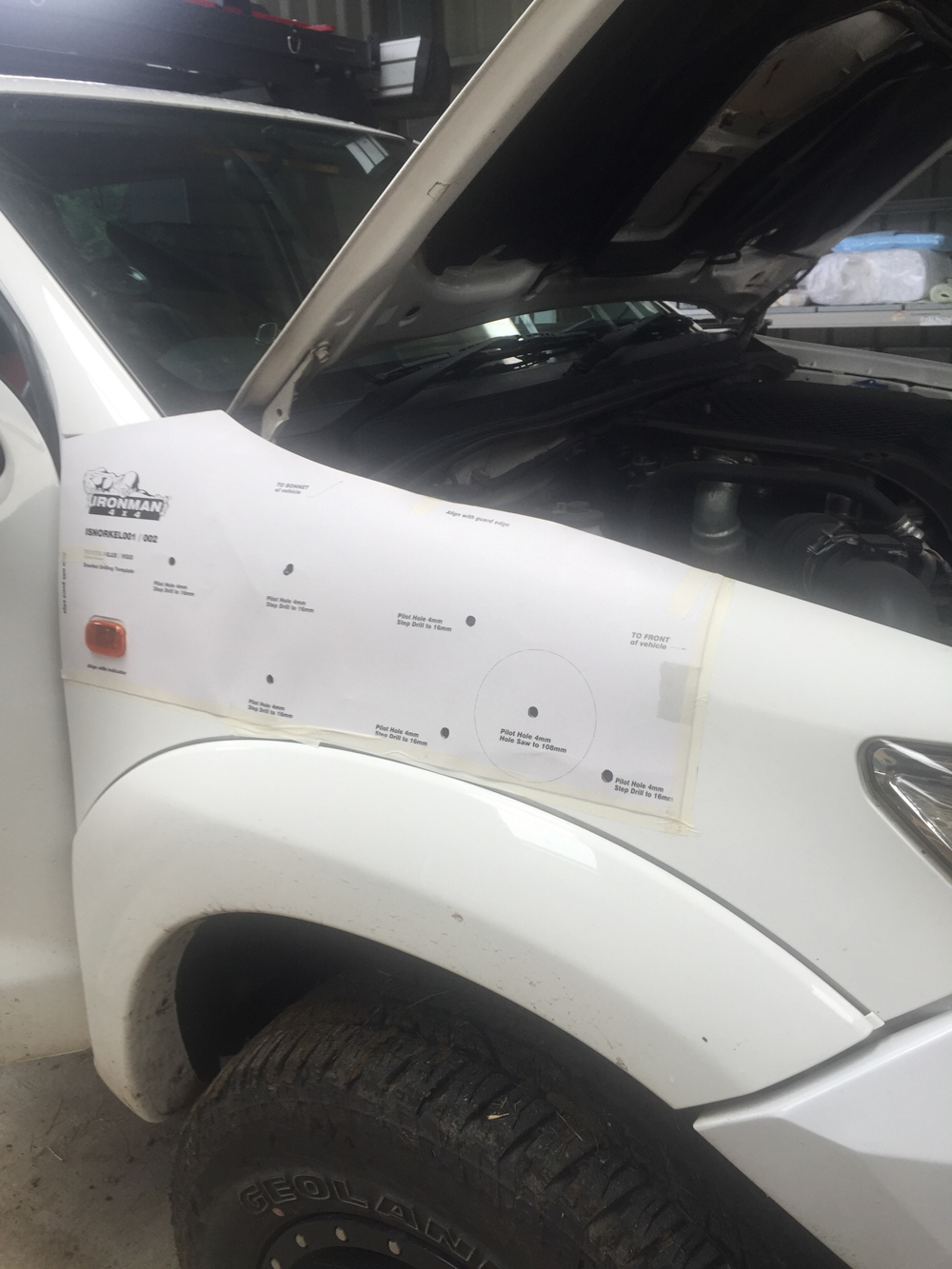

Completion
Et voilà, our house-on-wheels is finished. For over 11 months we dedicated ourselves to kitting out the truck, as every step of the build mattered to us. As the weeks elapsed, we stayed heads down, backside up. There were things we’d given up for the expedition such as togetherness and our privacy. But we were beholden to the bigger picture. Aspiring towards a self-contained base from which we could comfortably live without needing to resupply for days if not weeks at a time. To us, that’s rolled-gold. @fourwheelednomad
